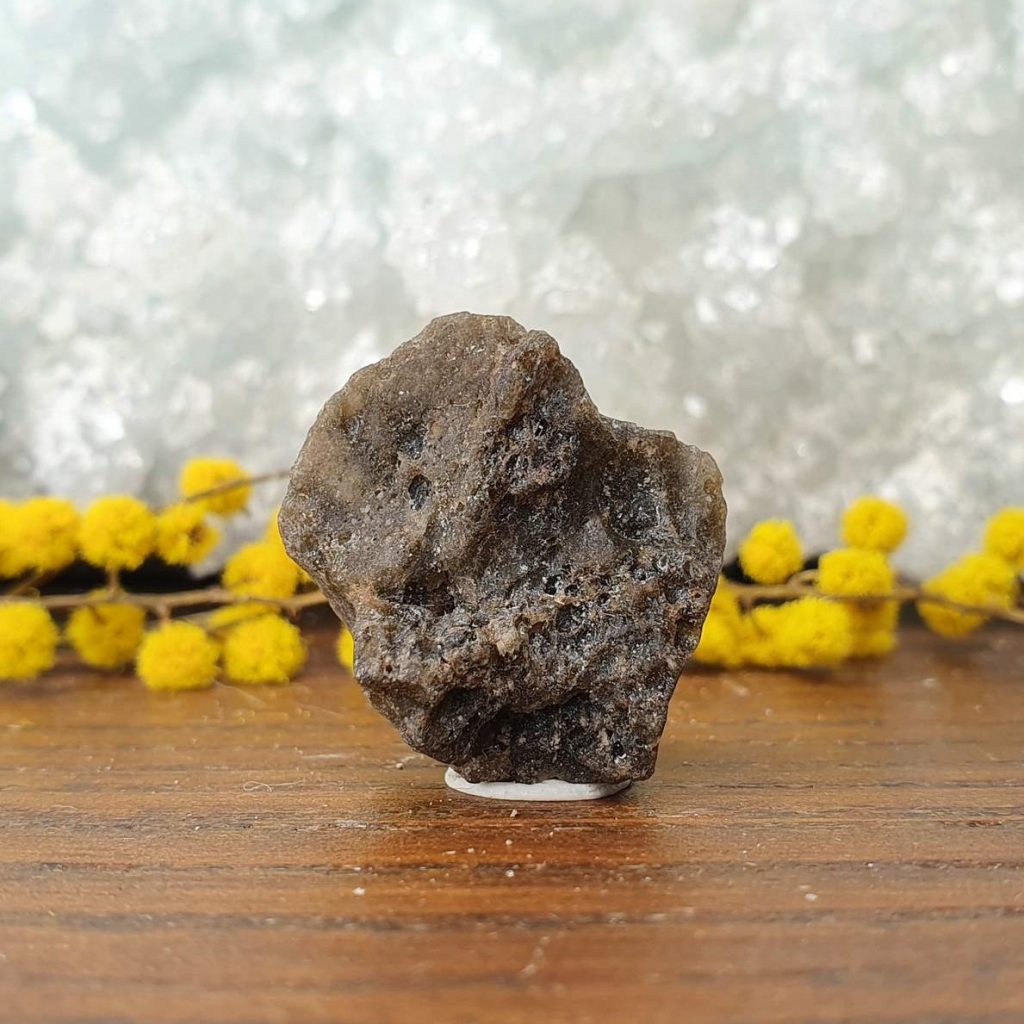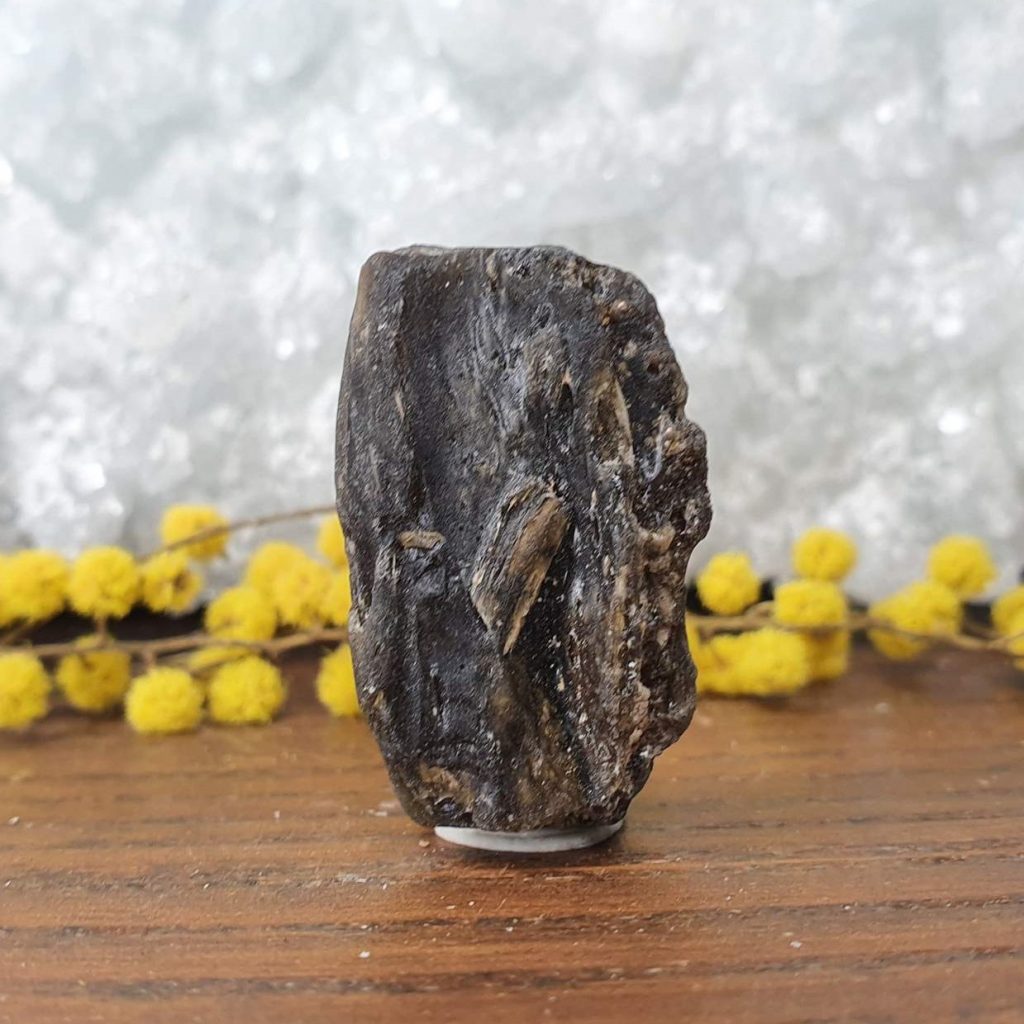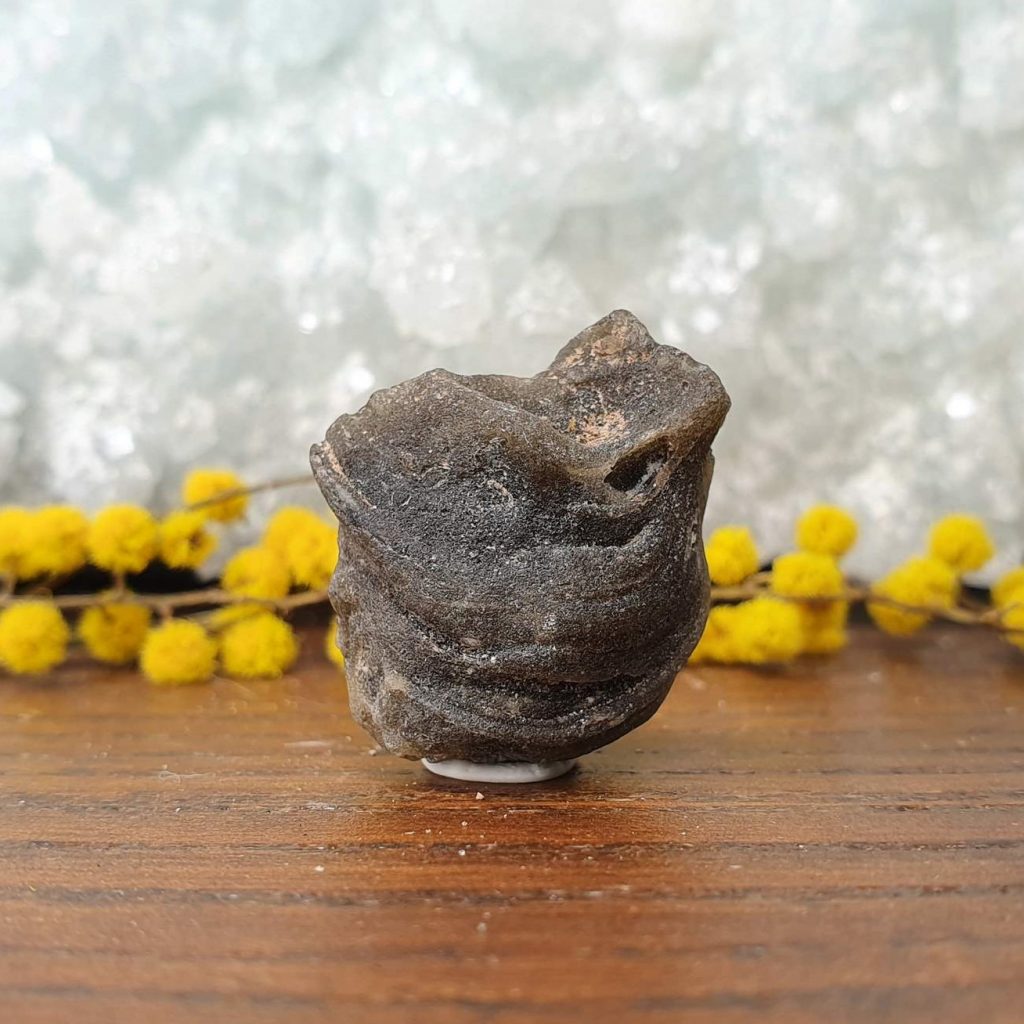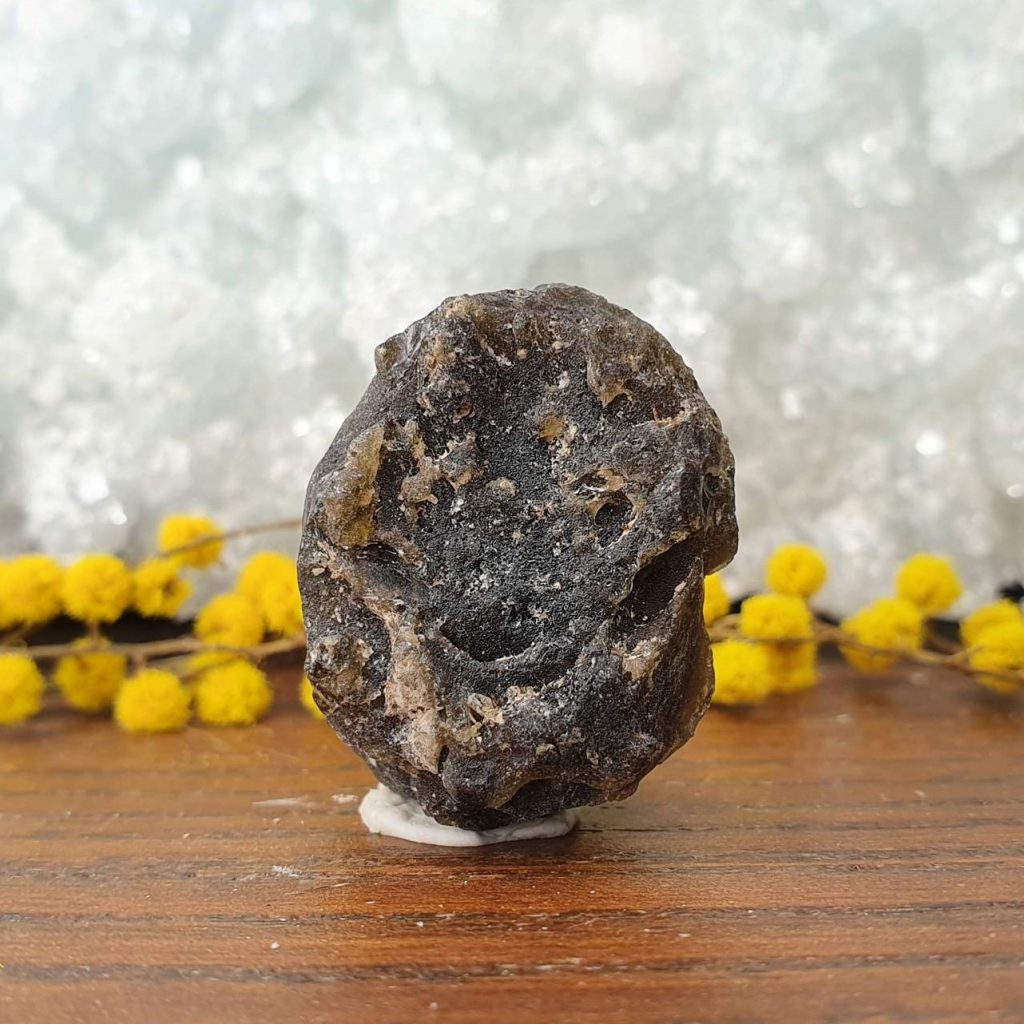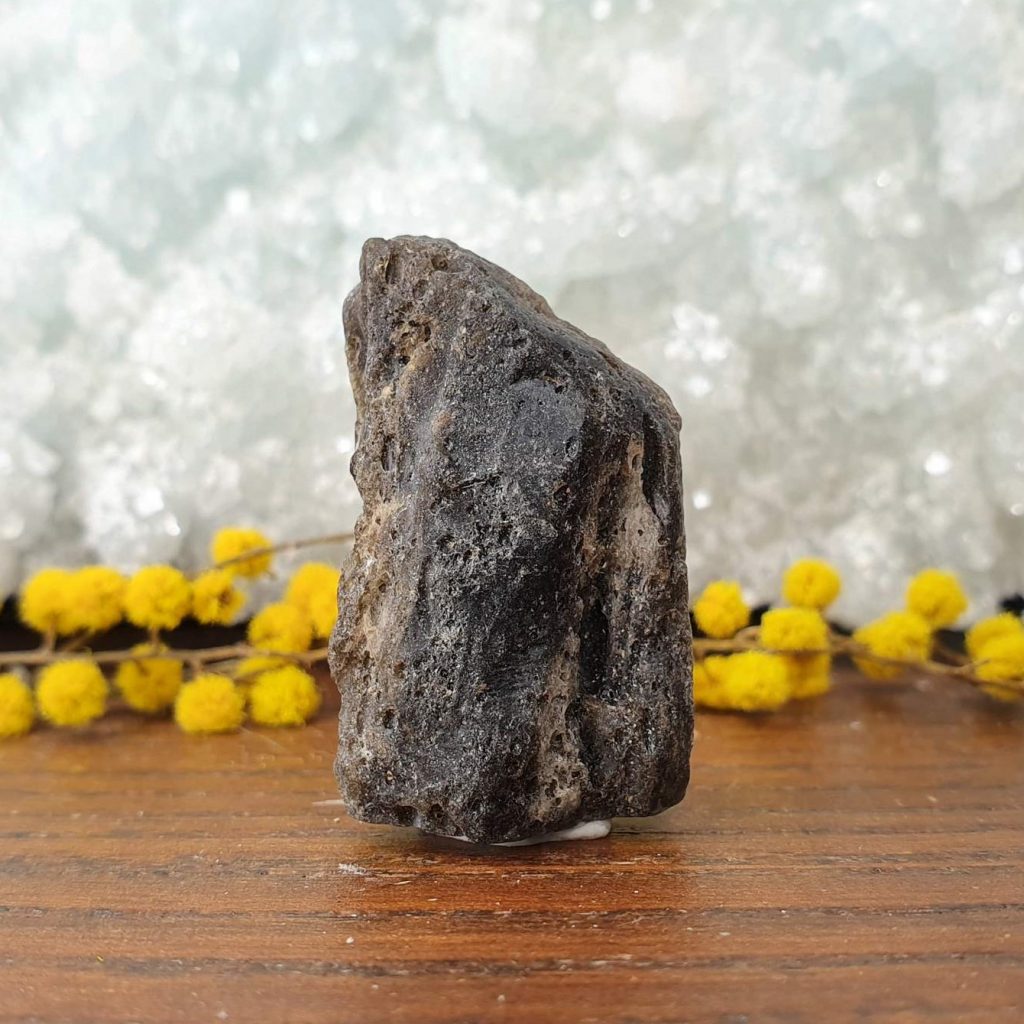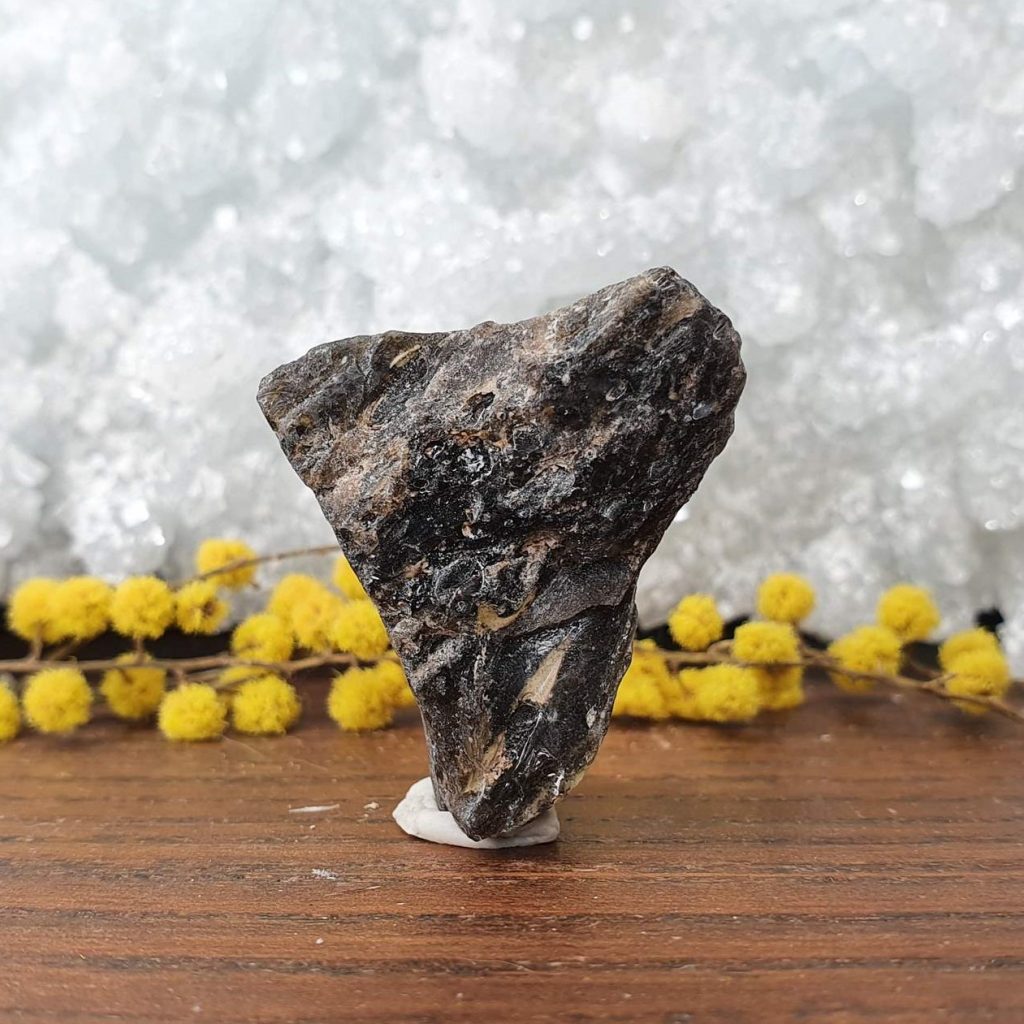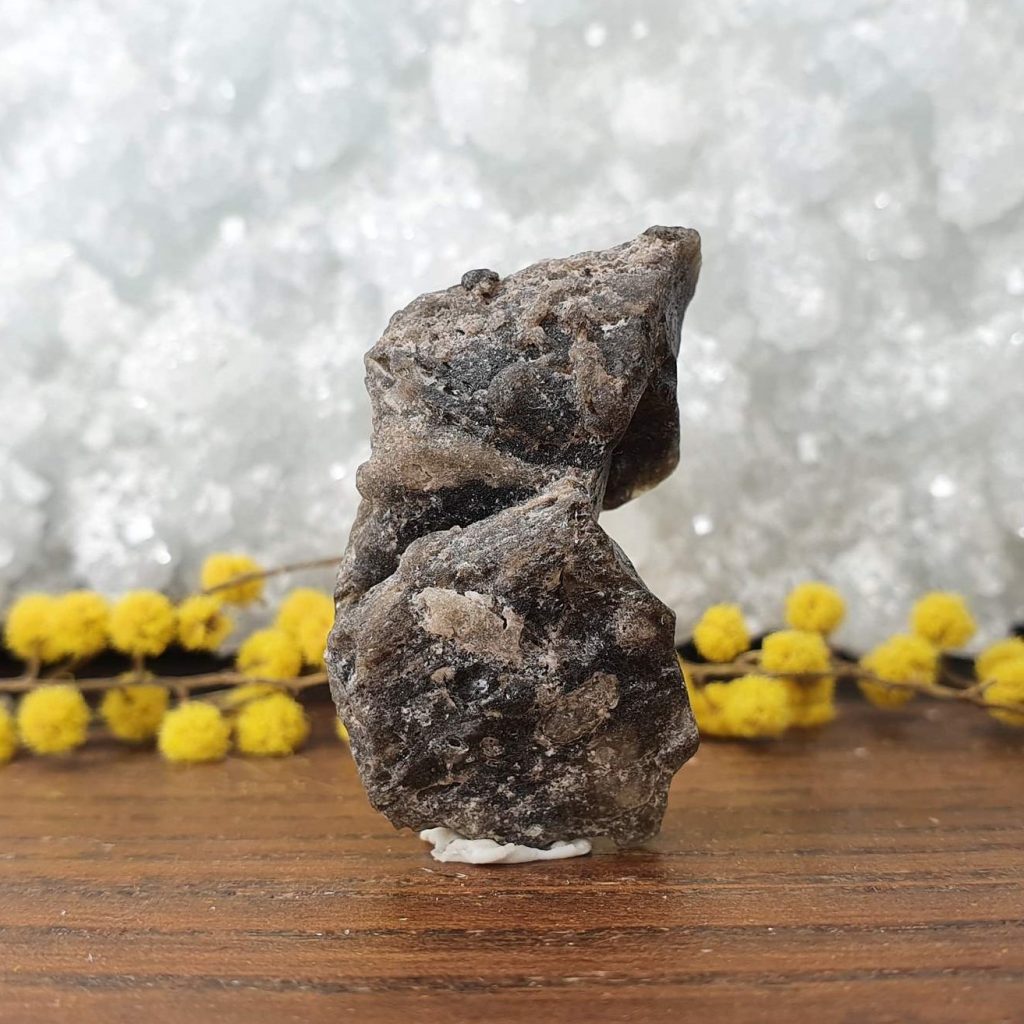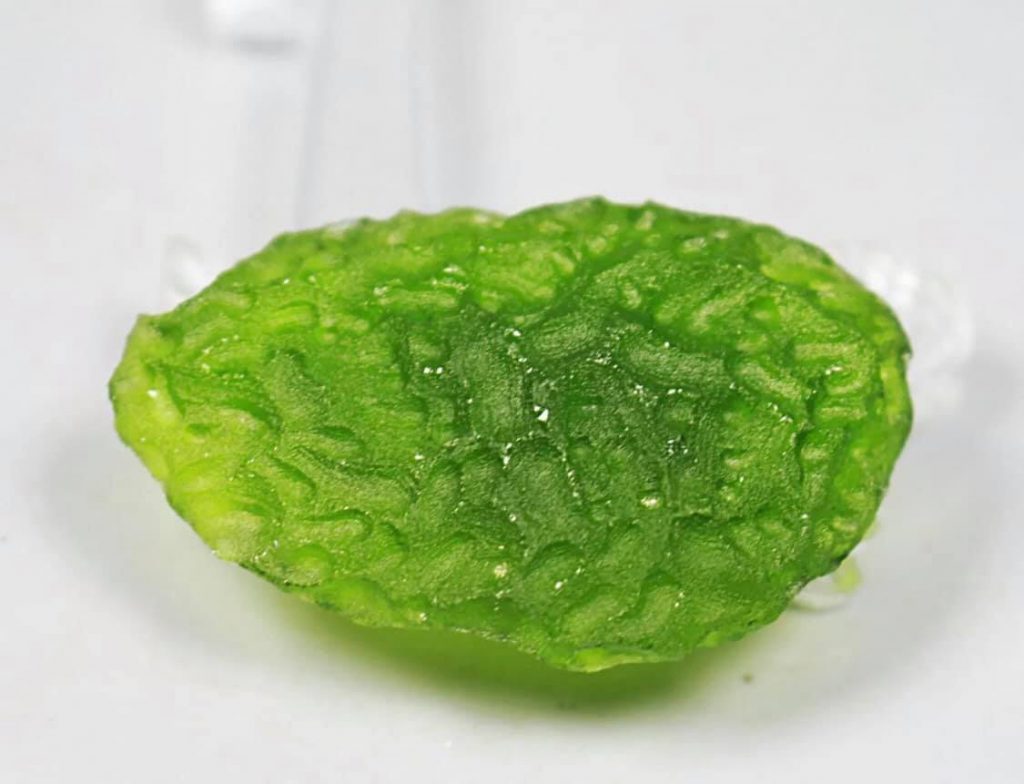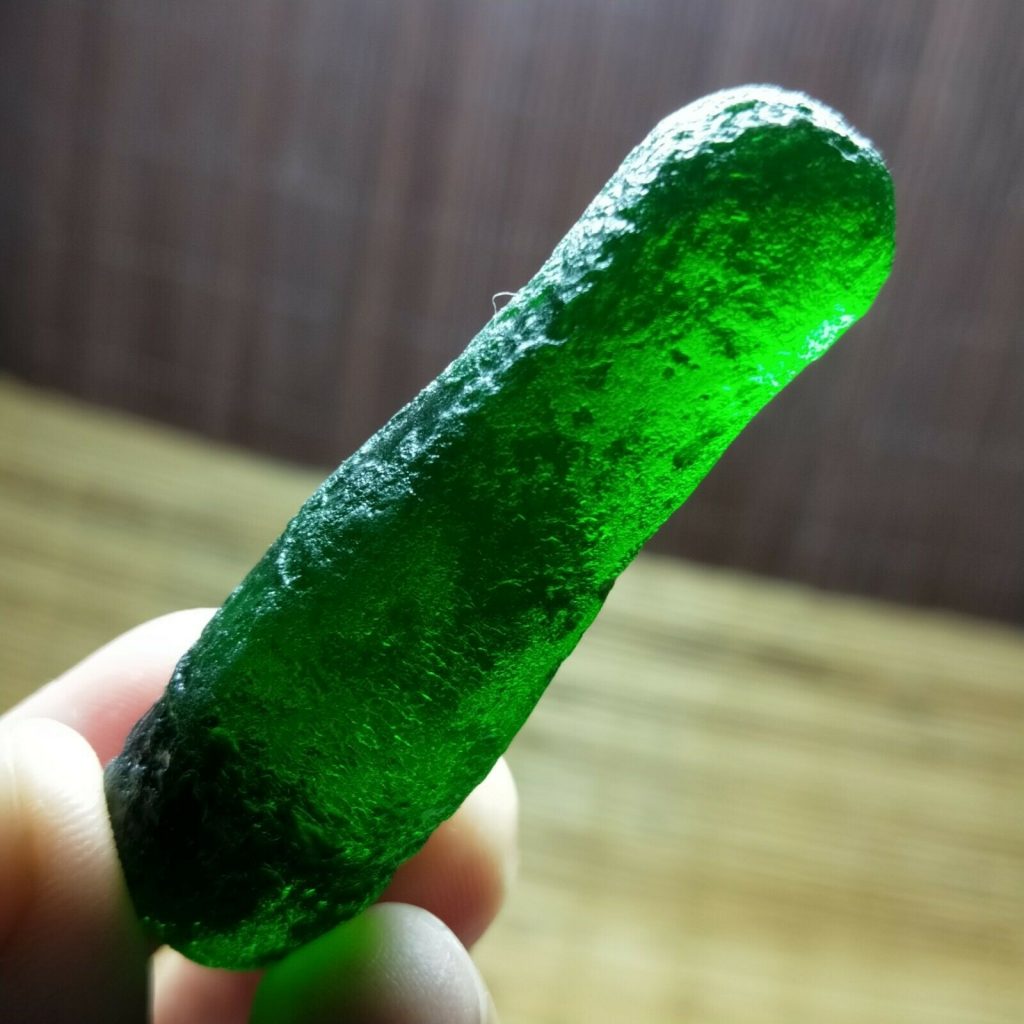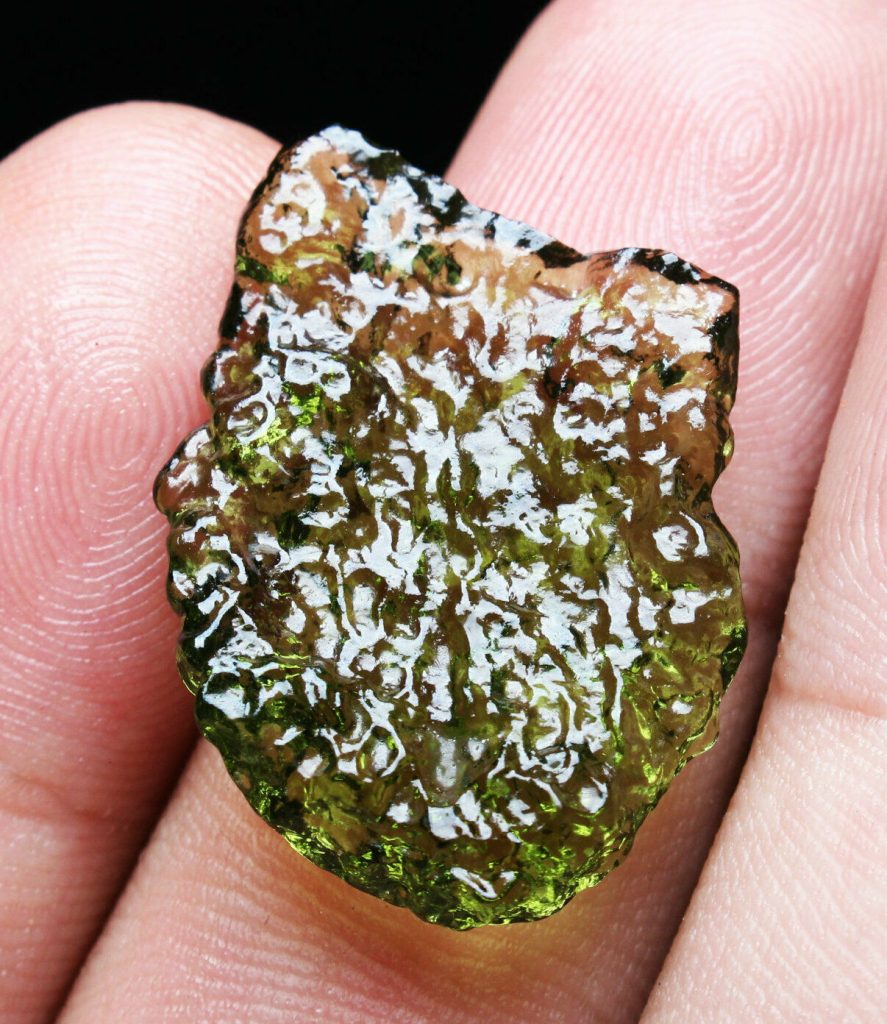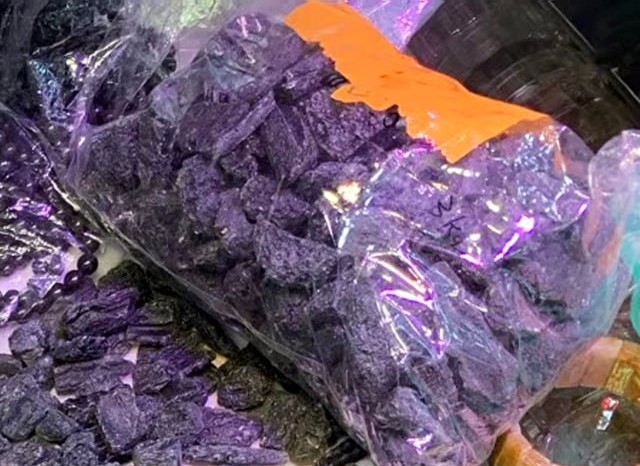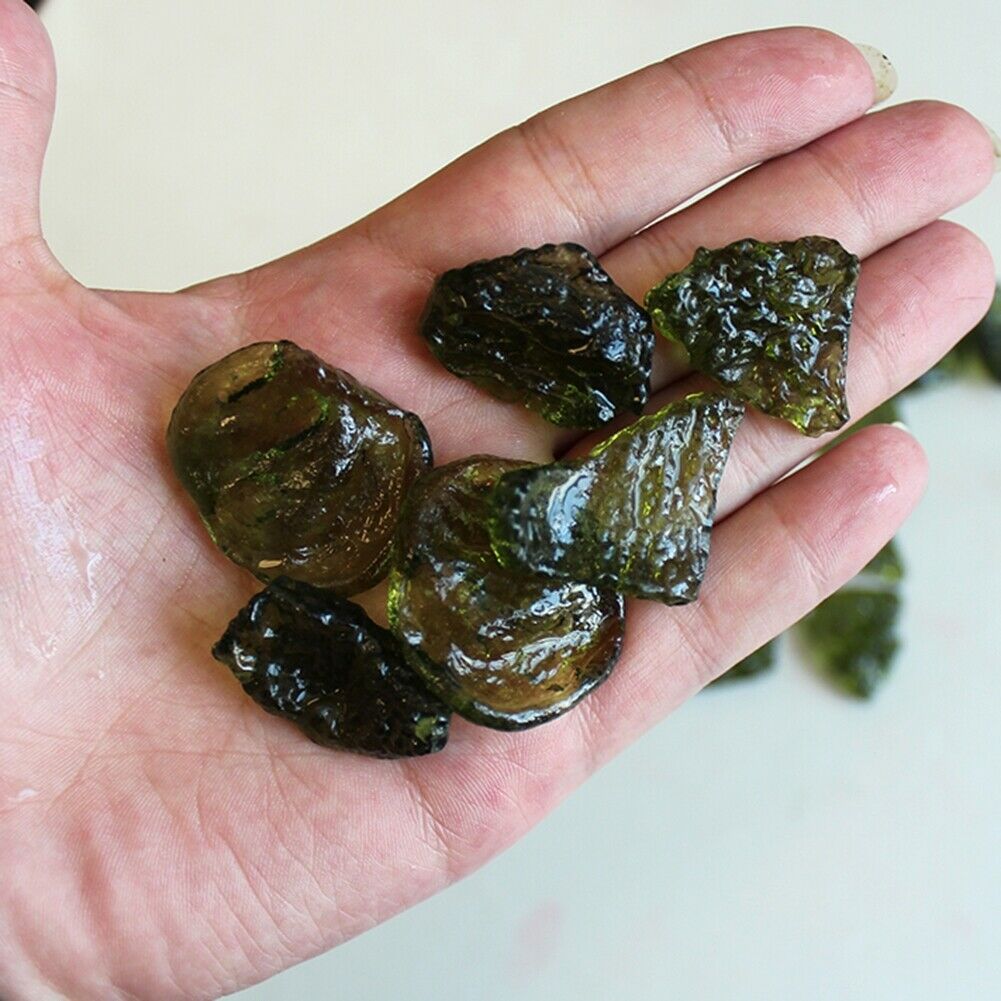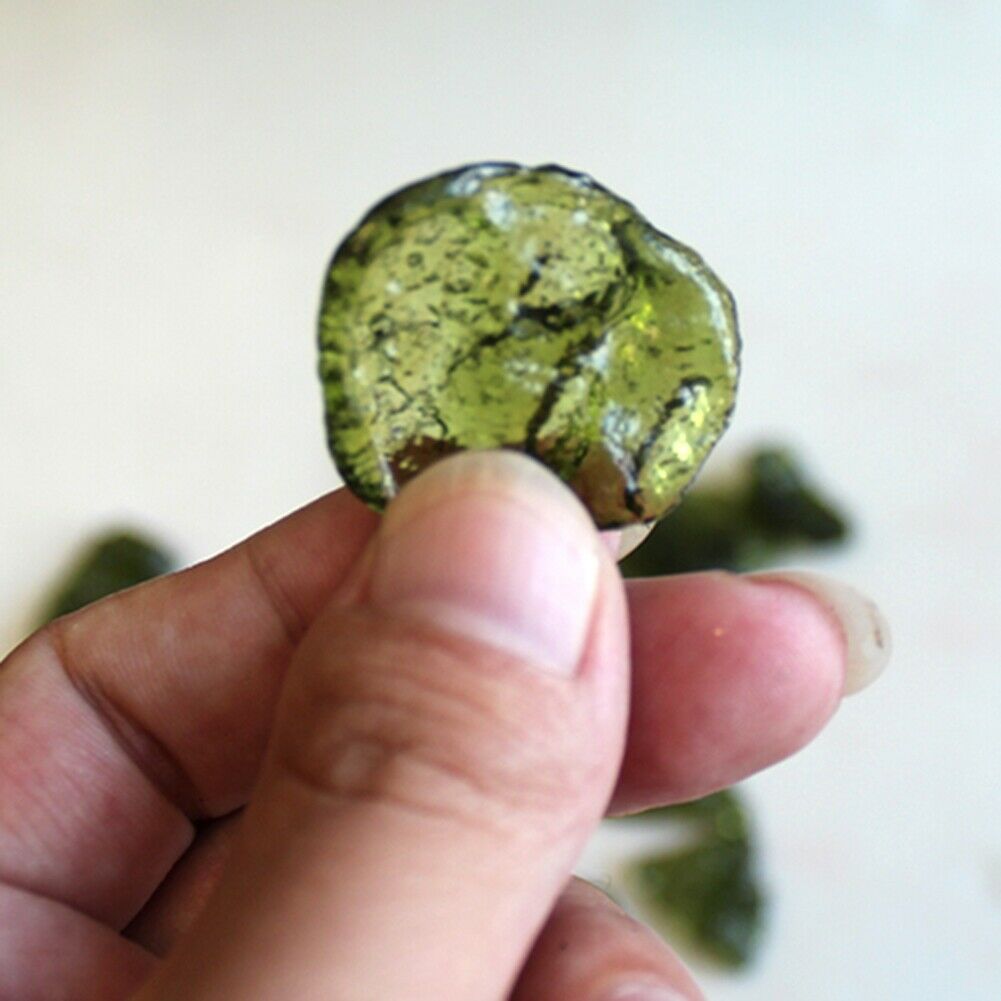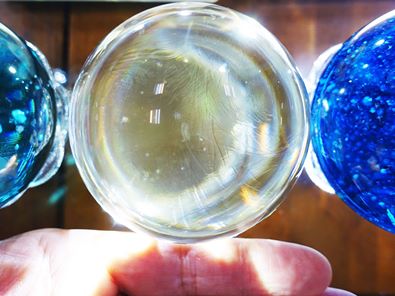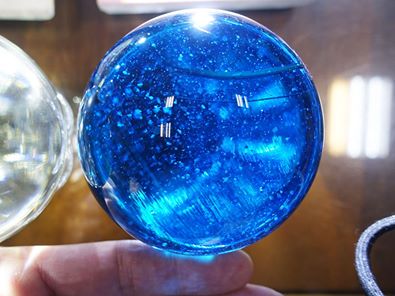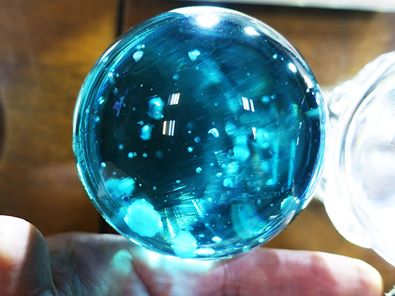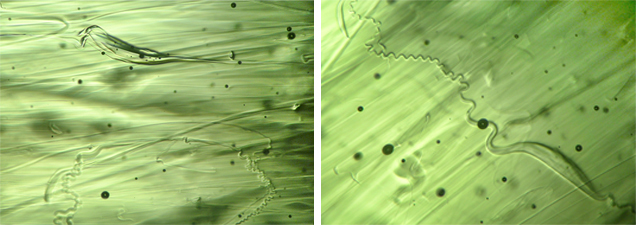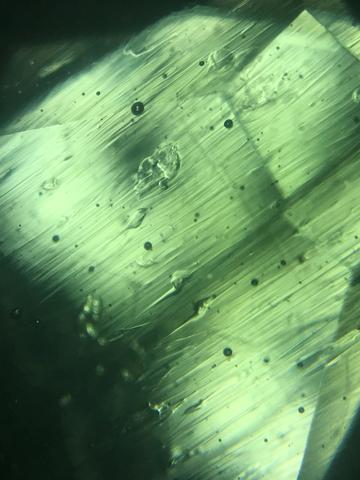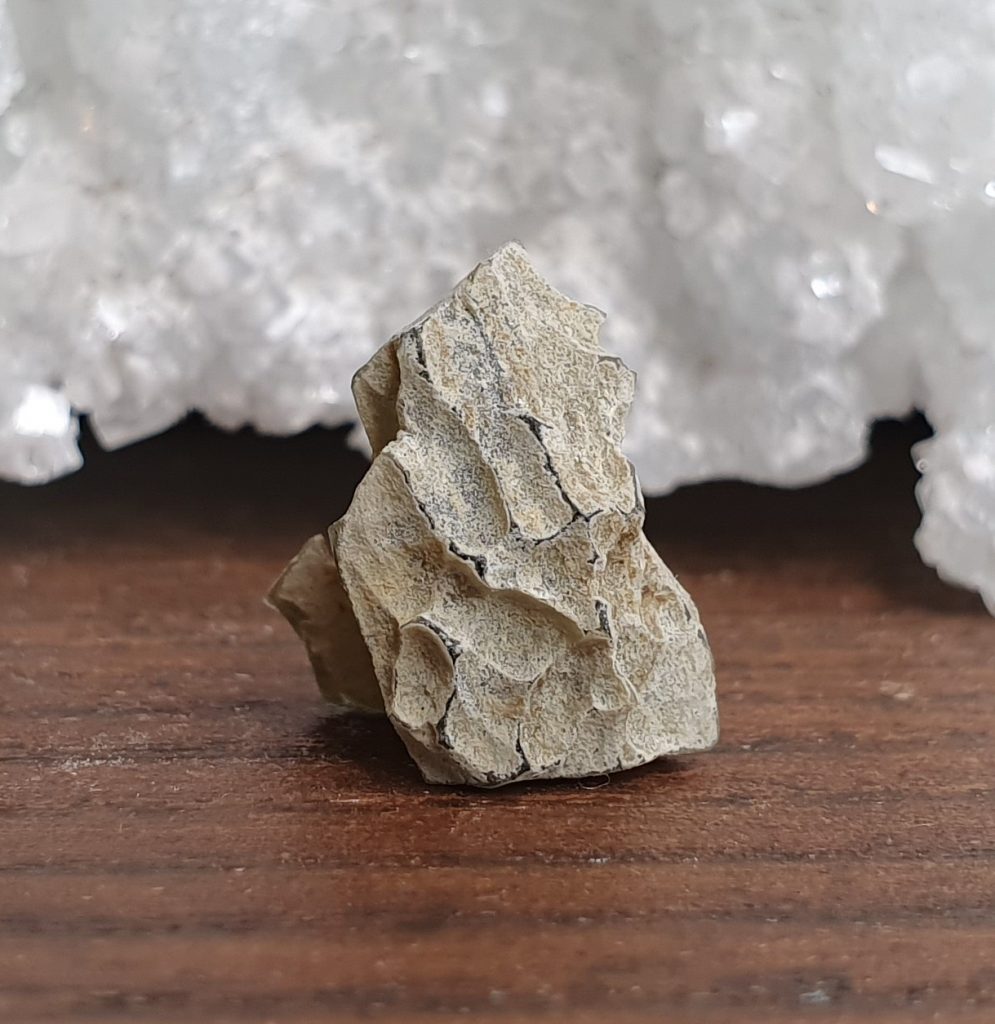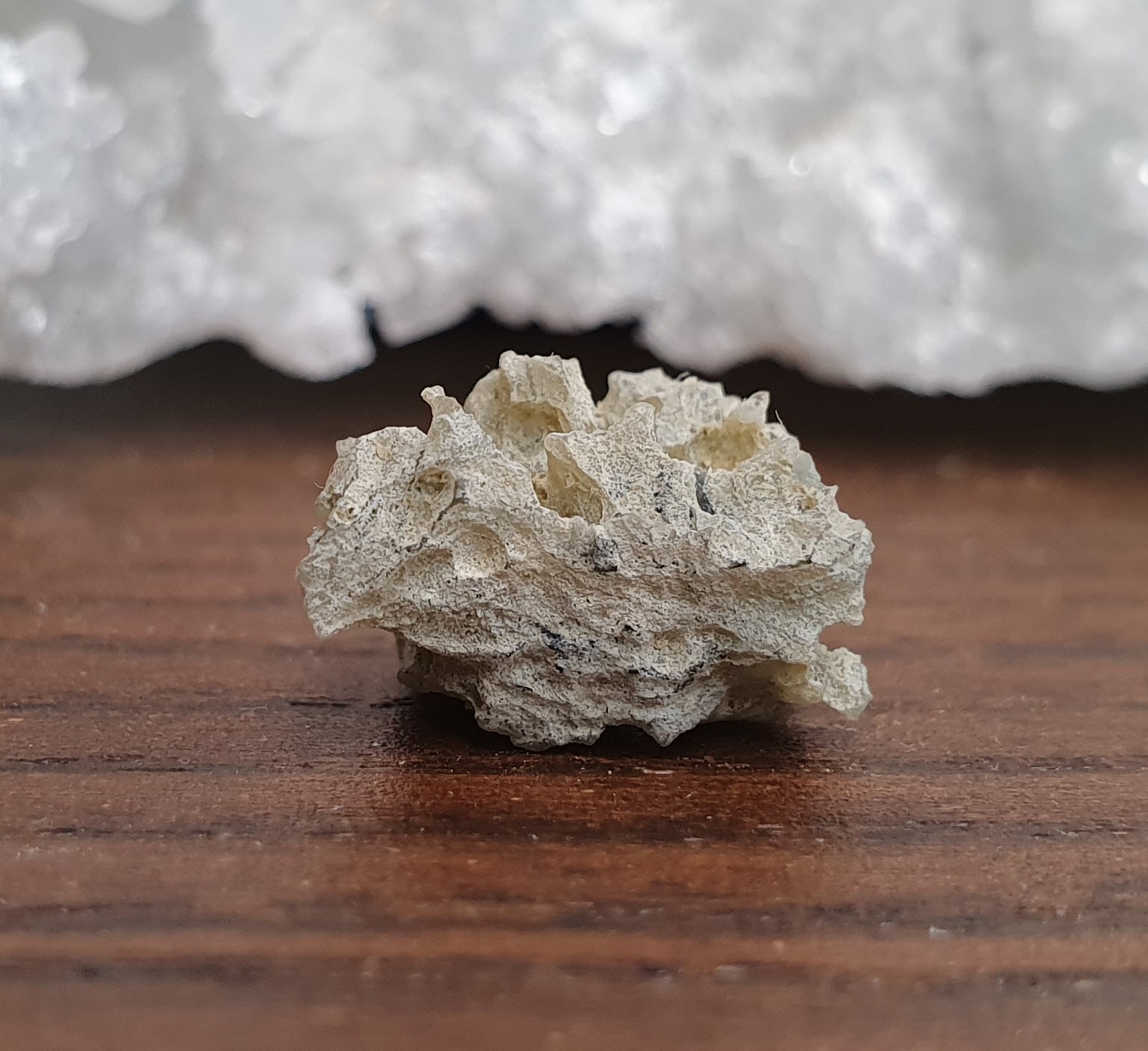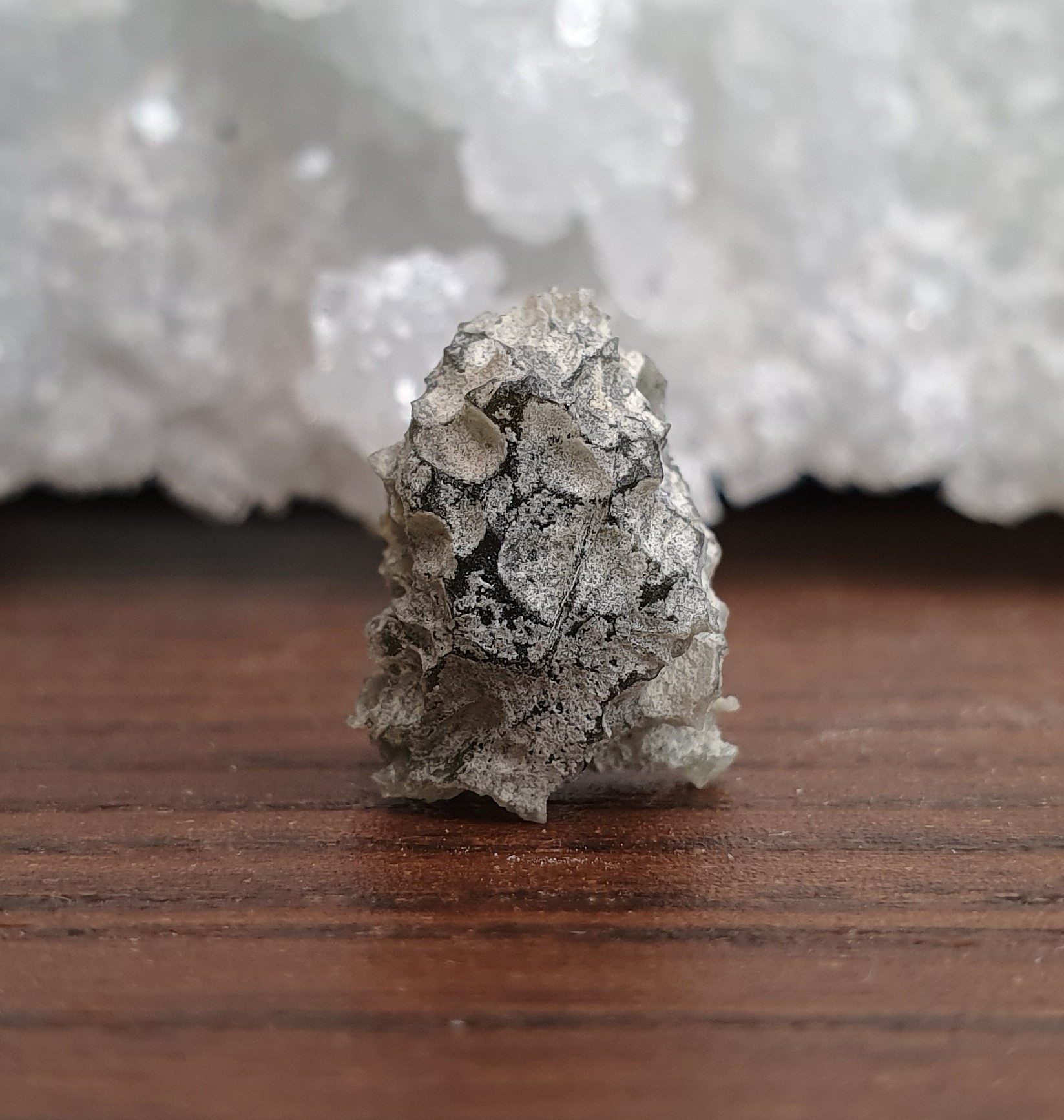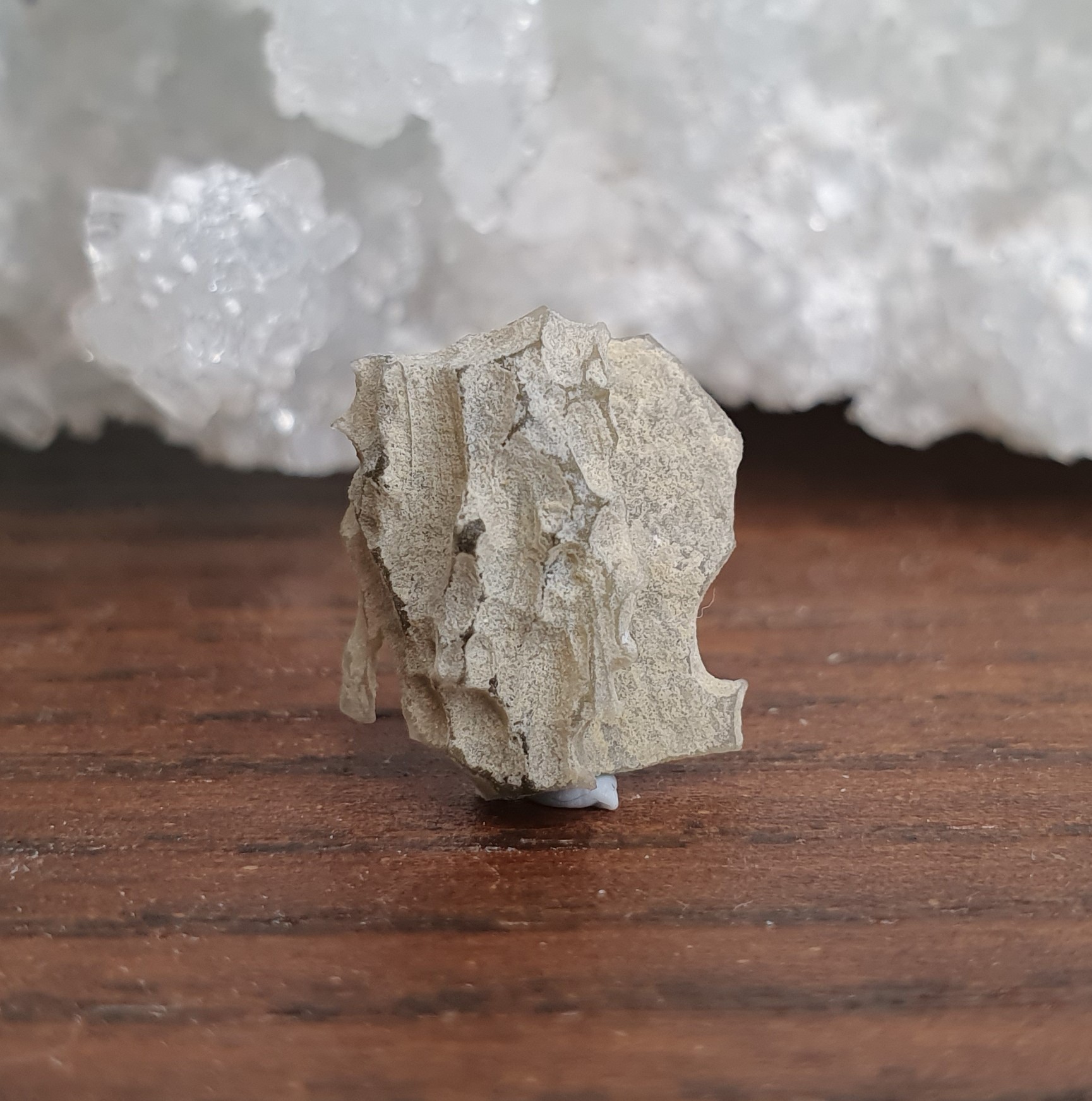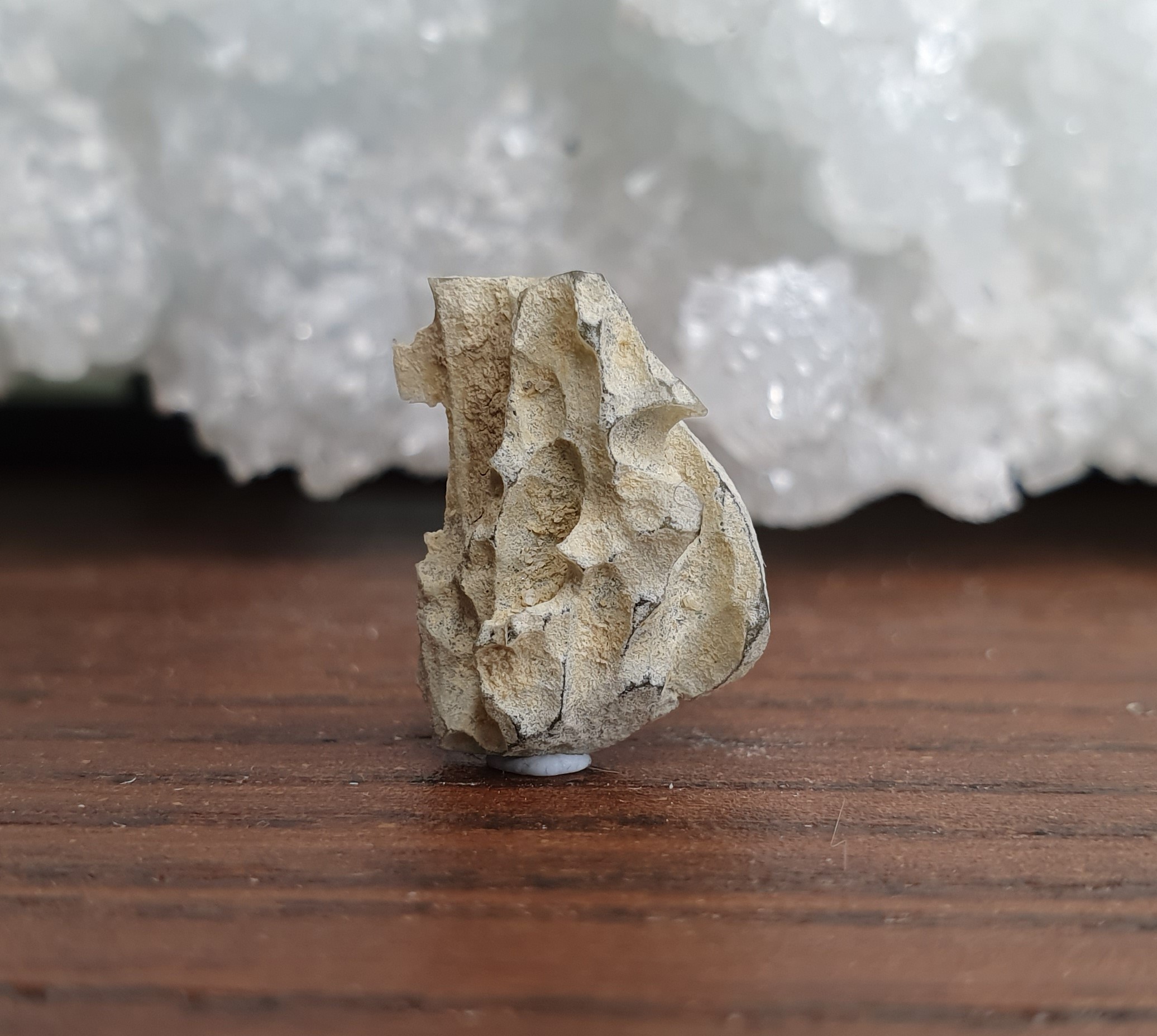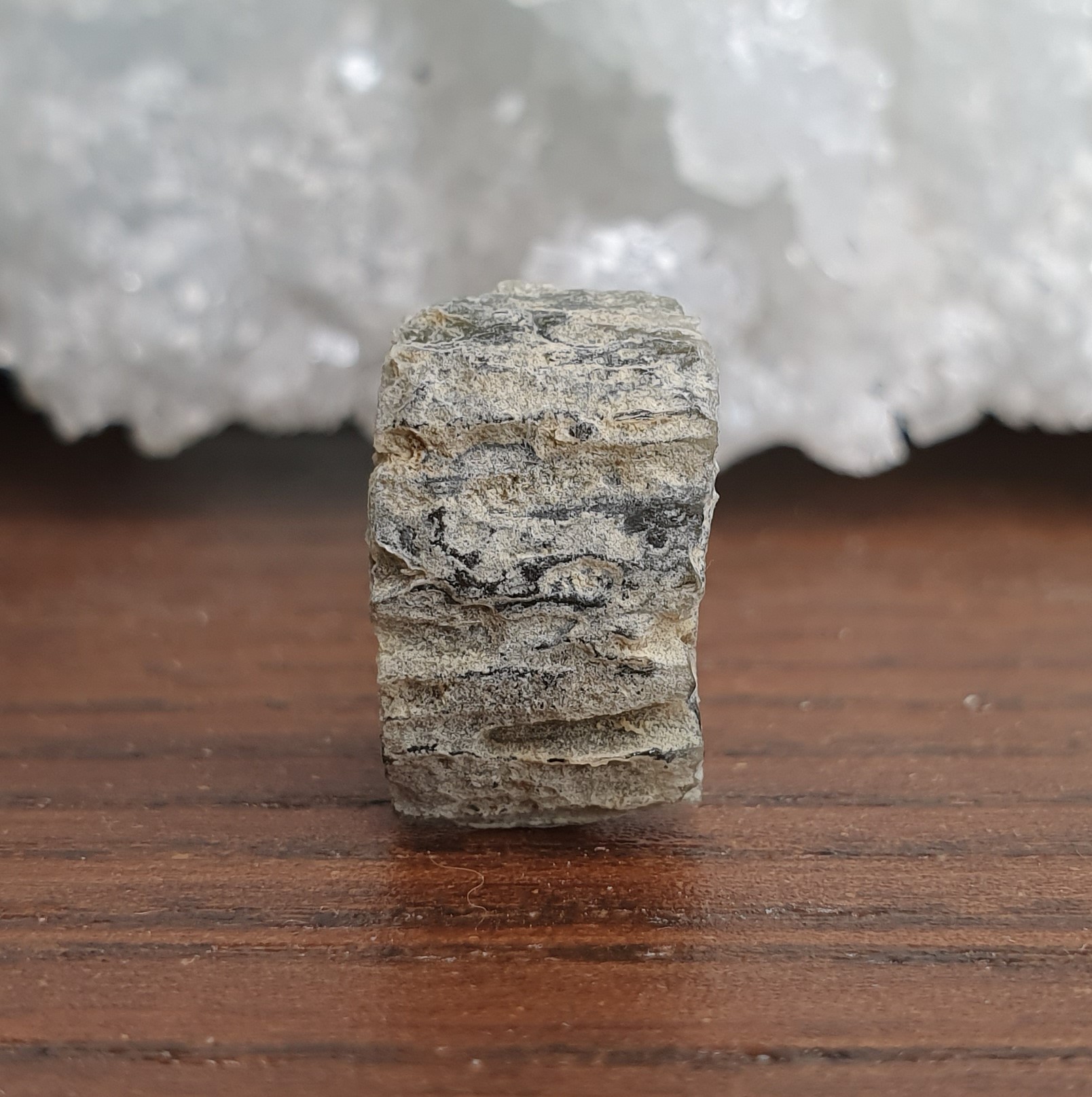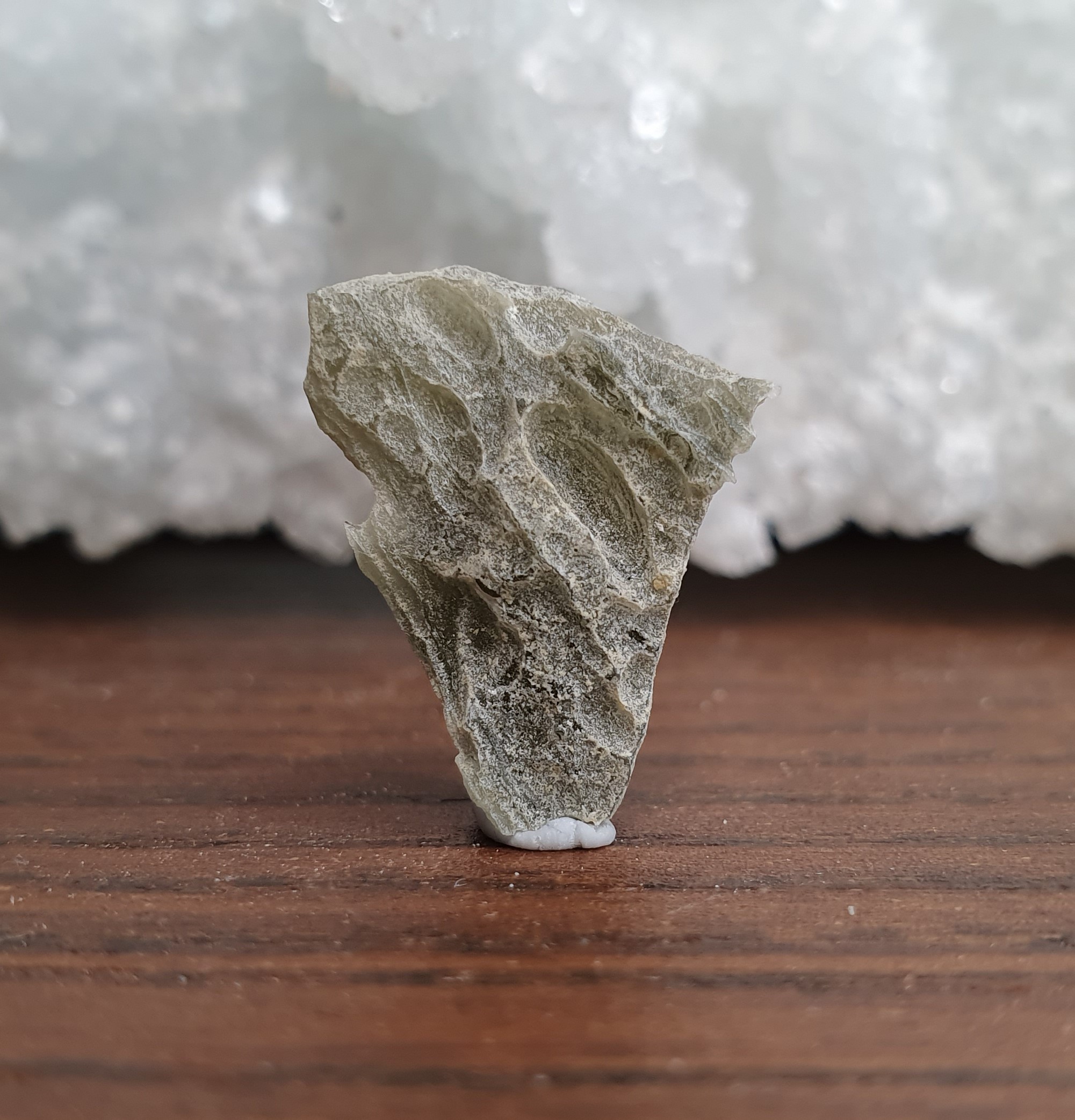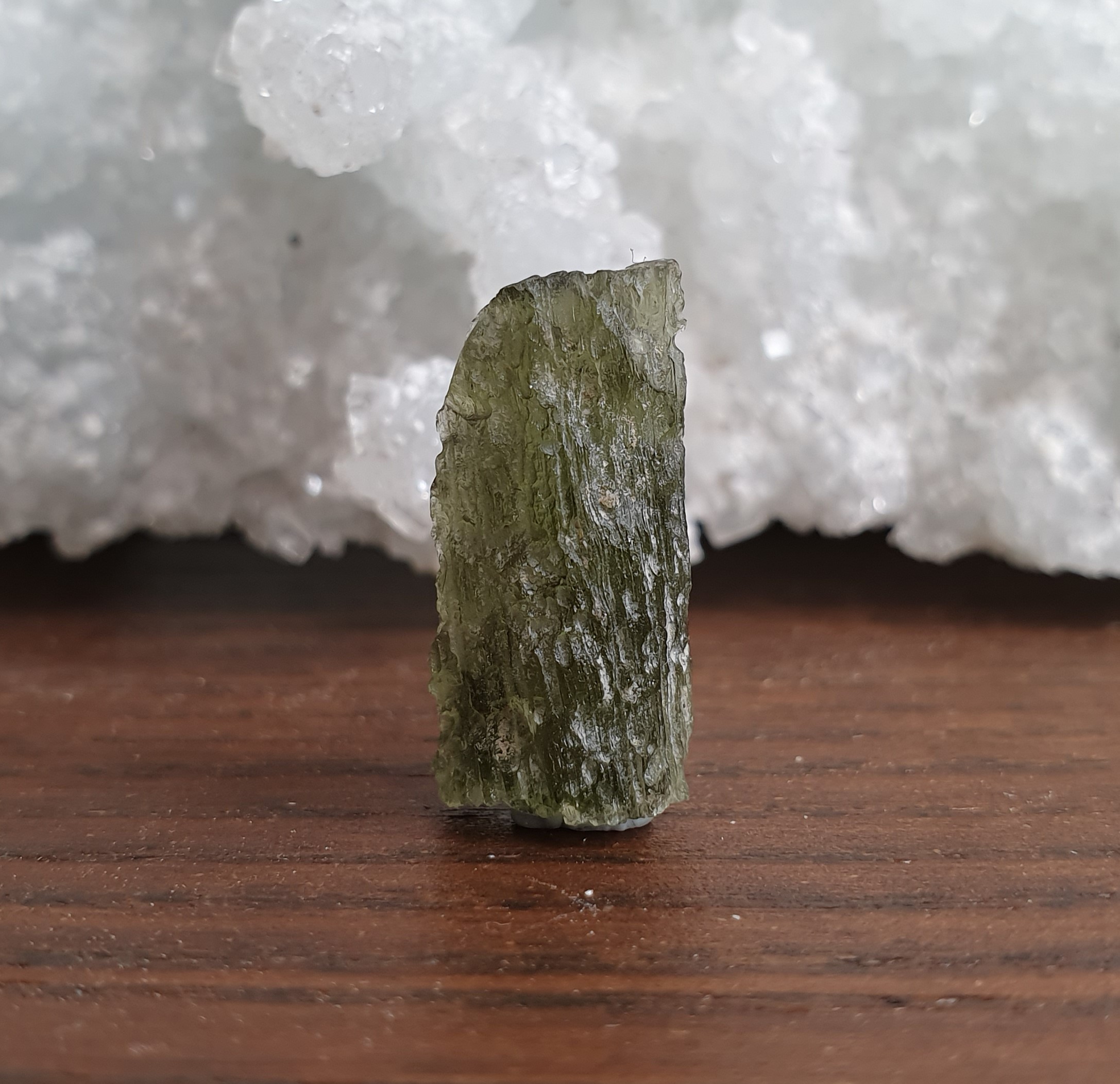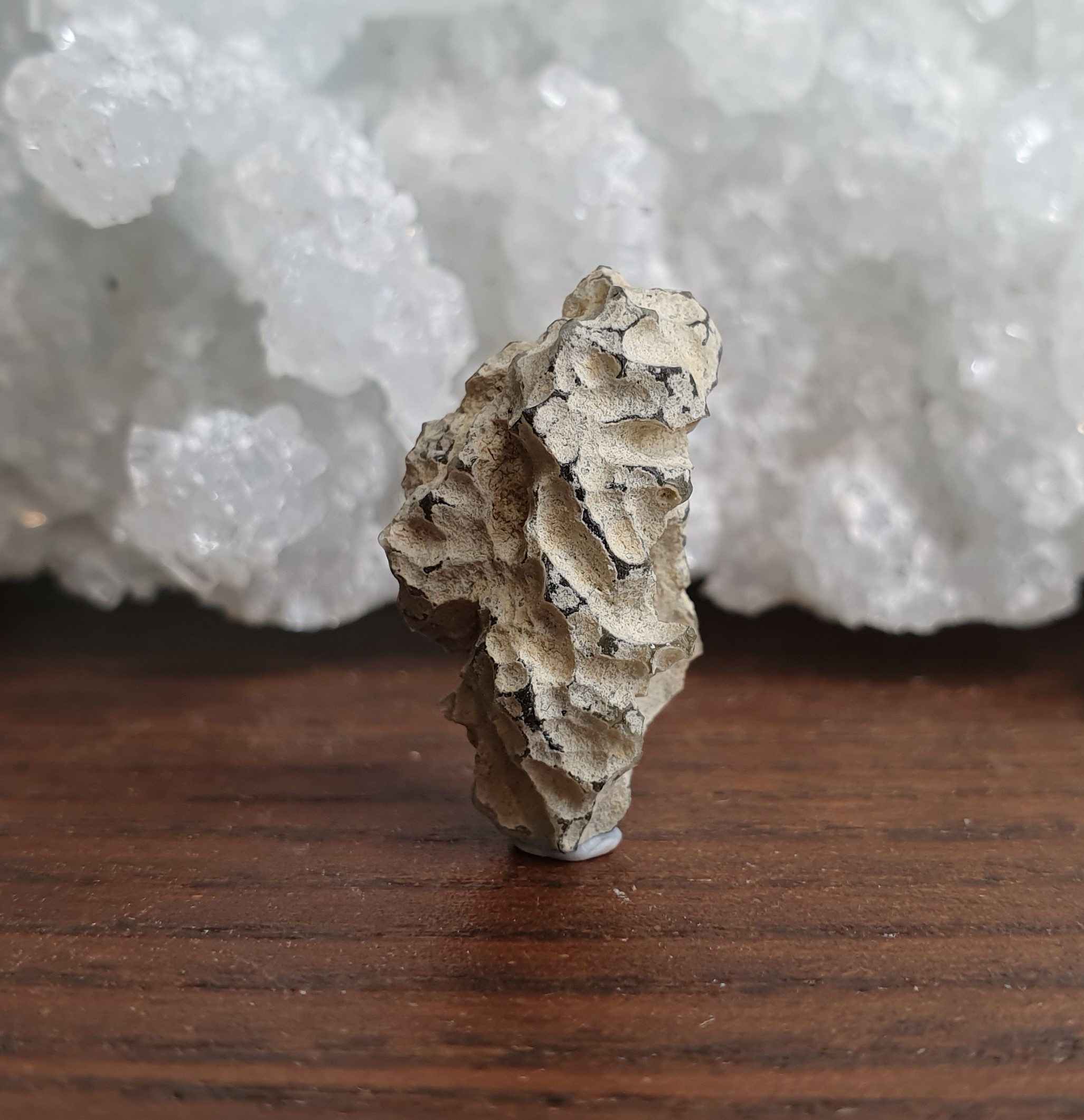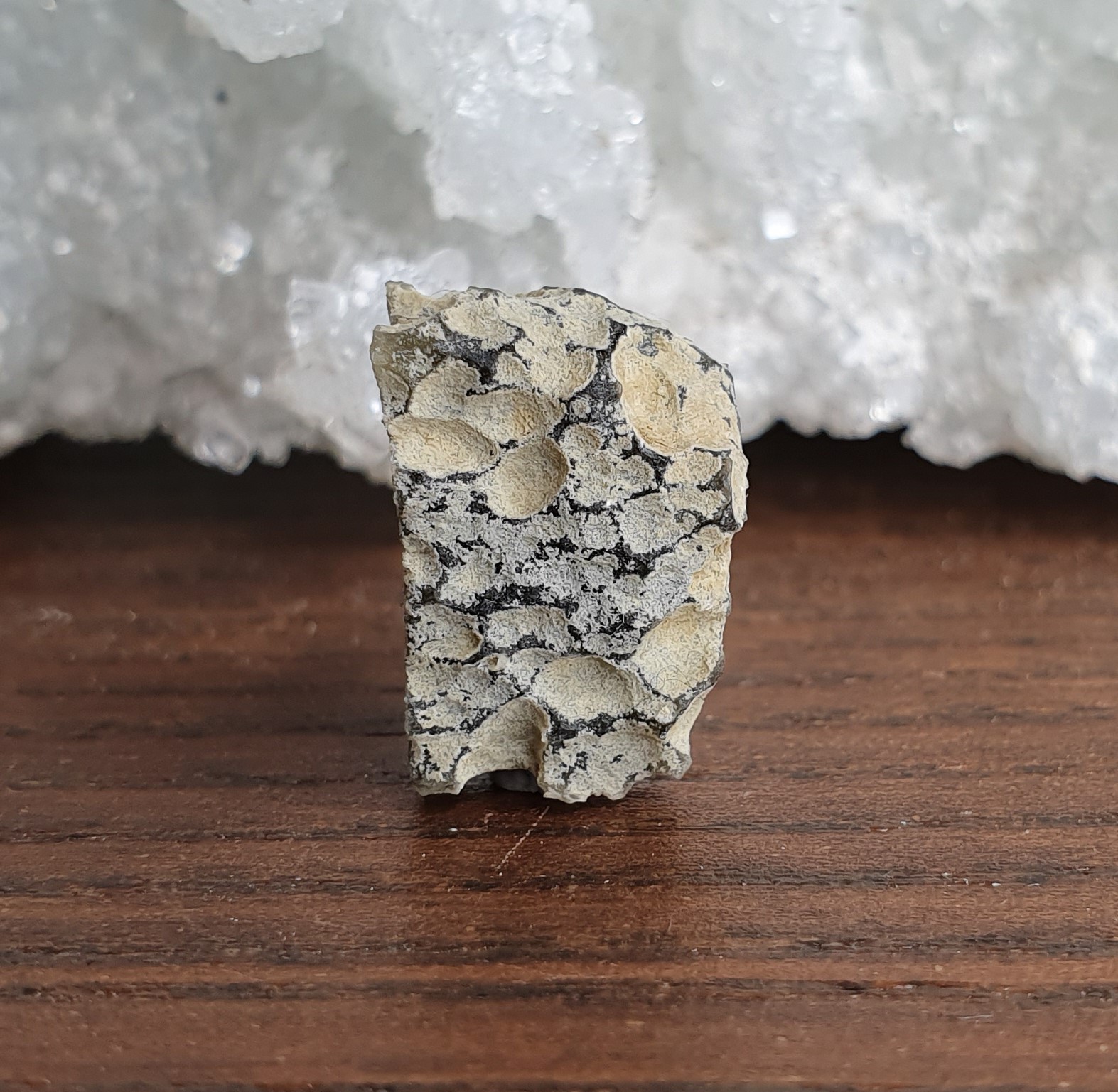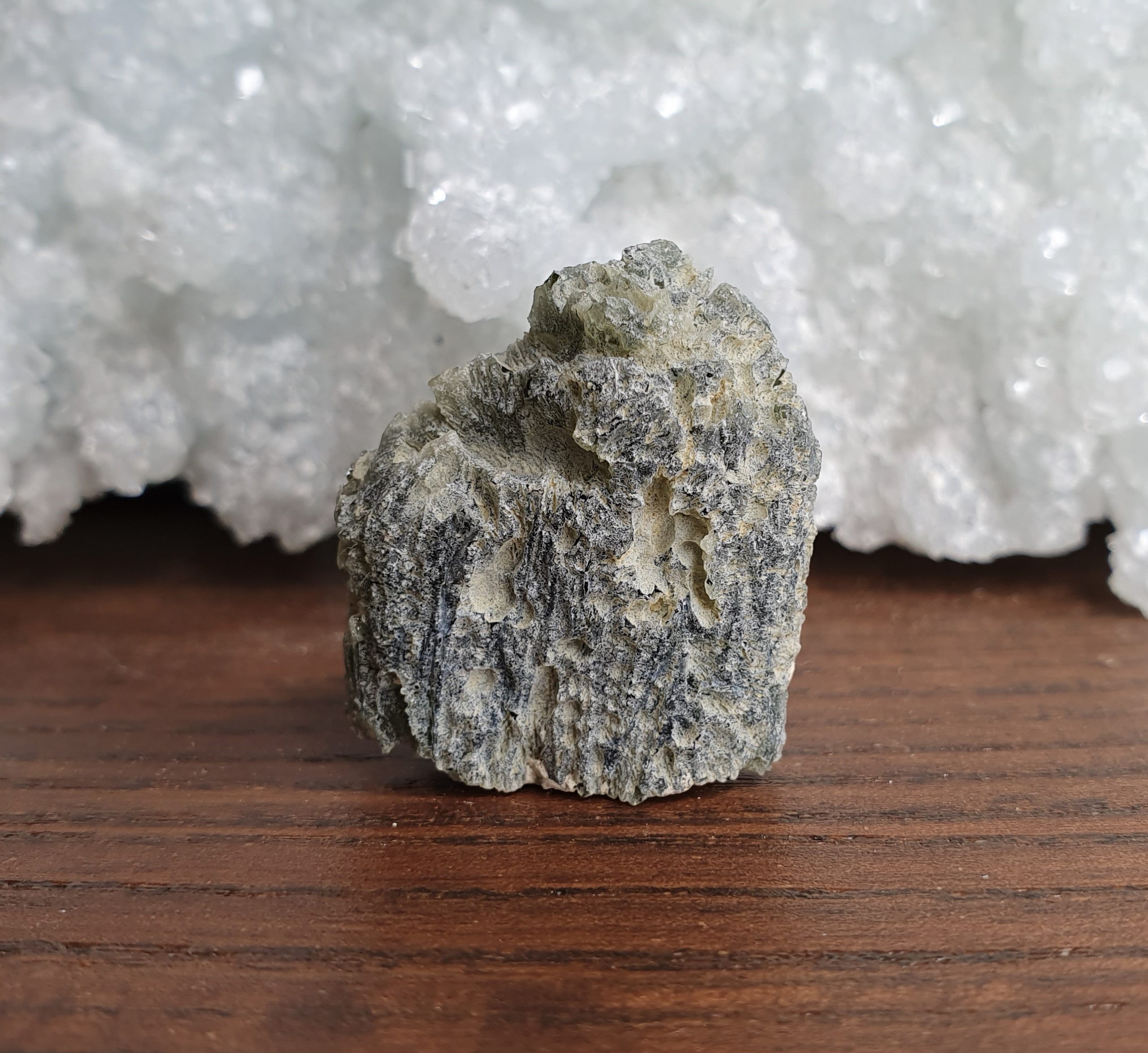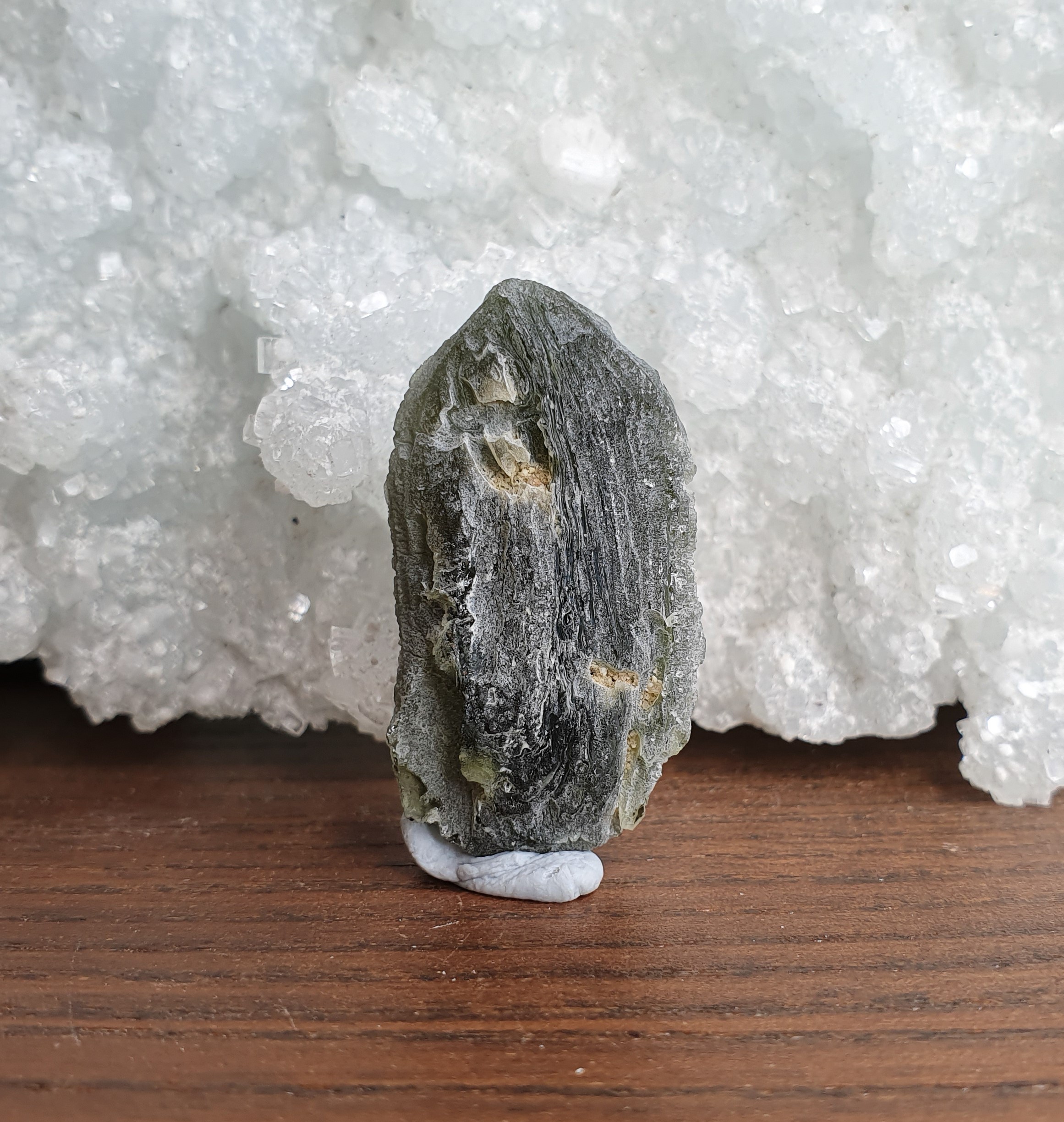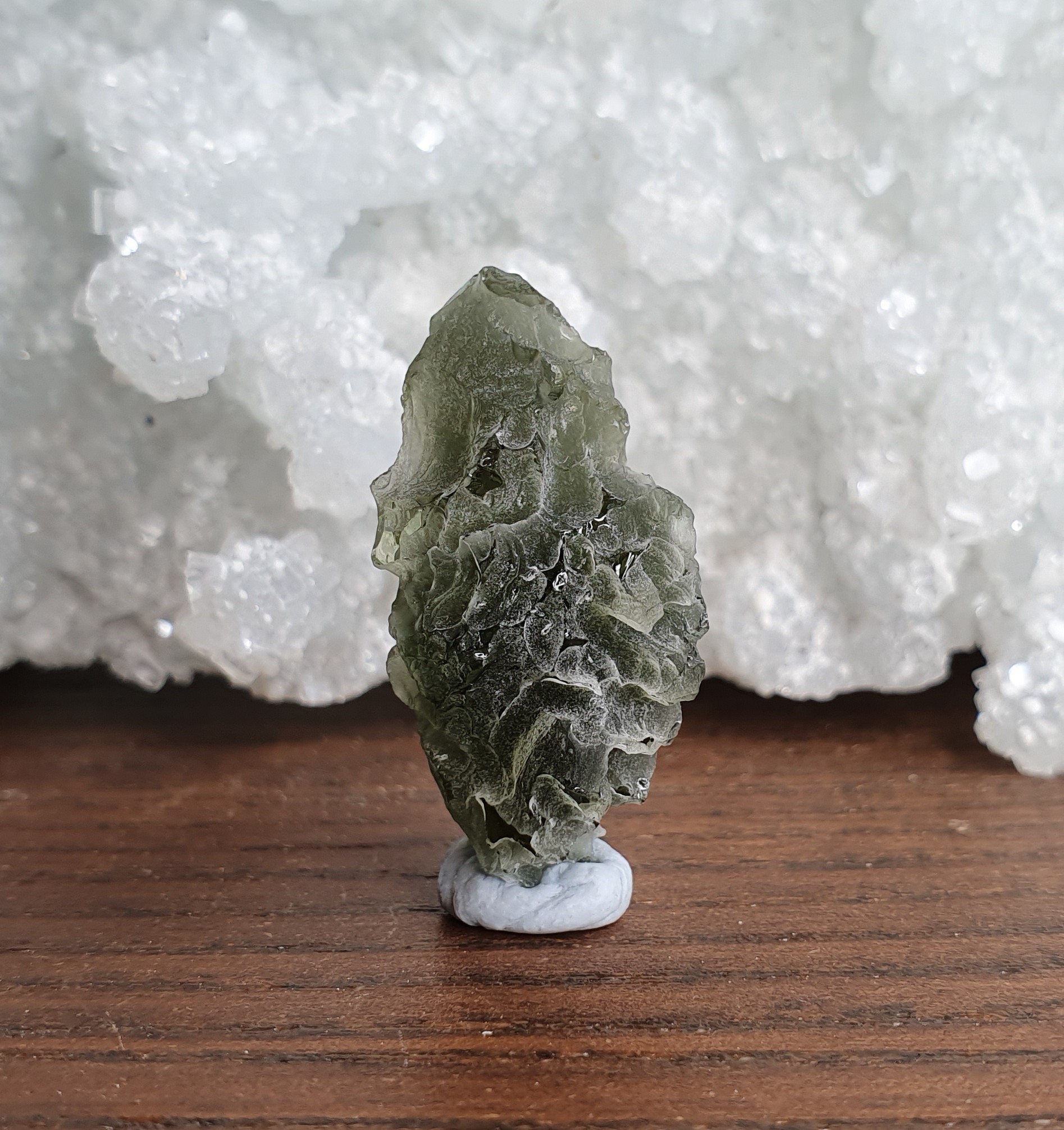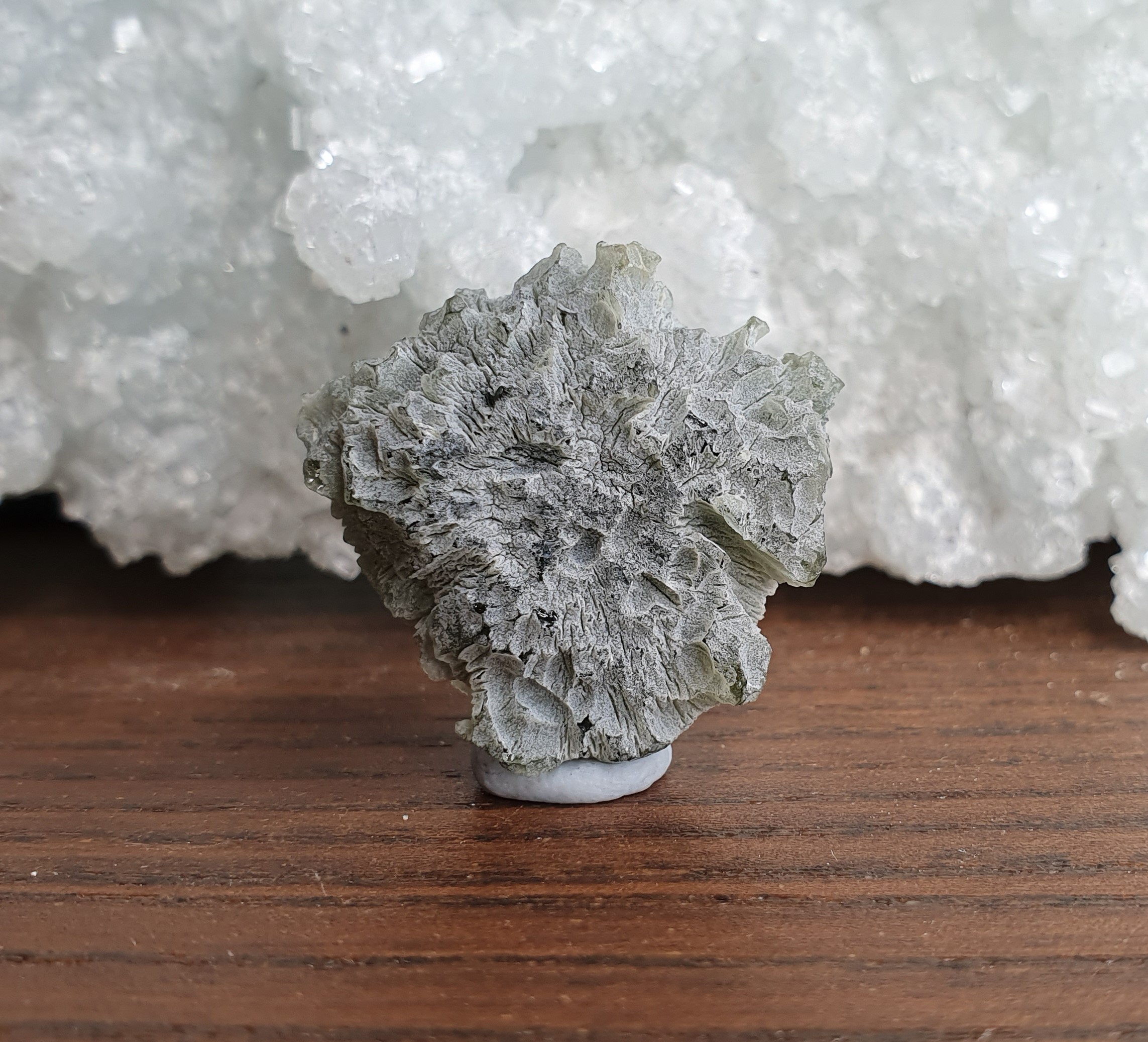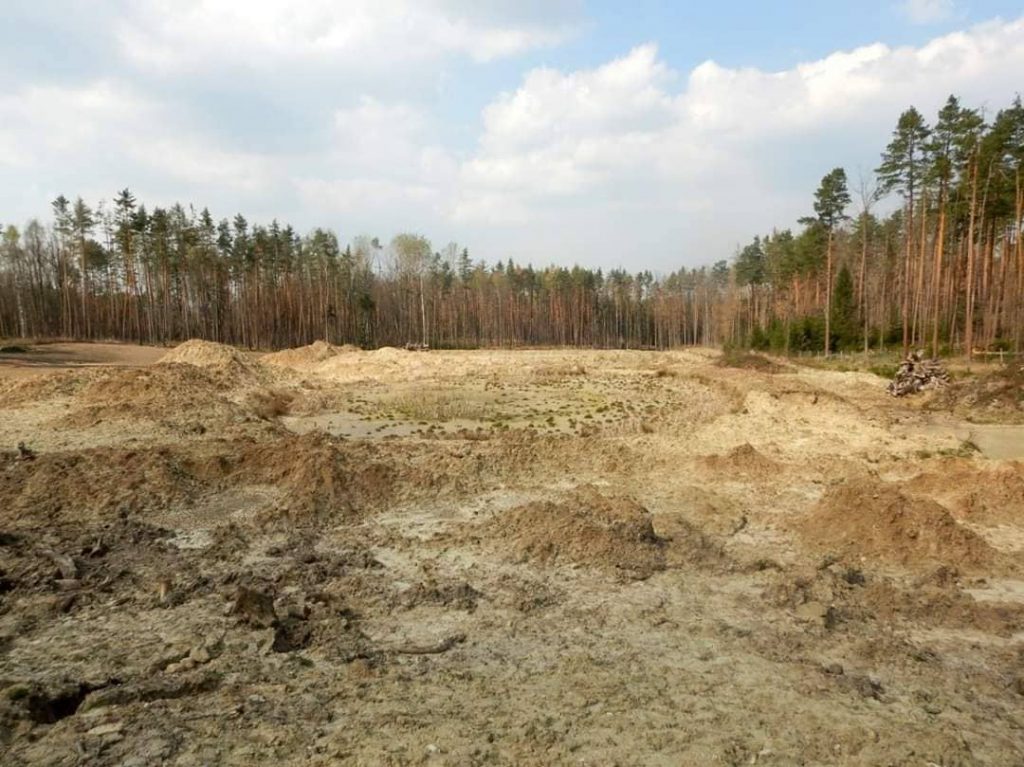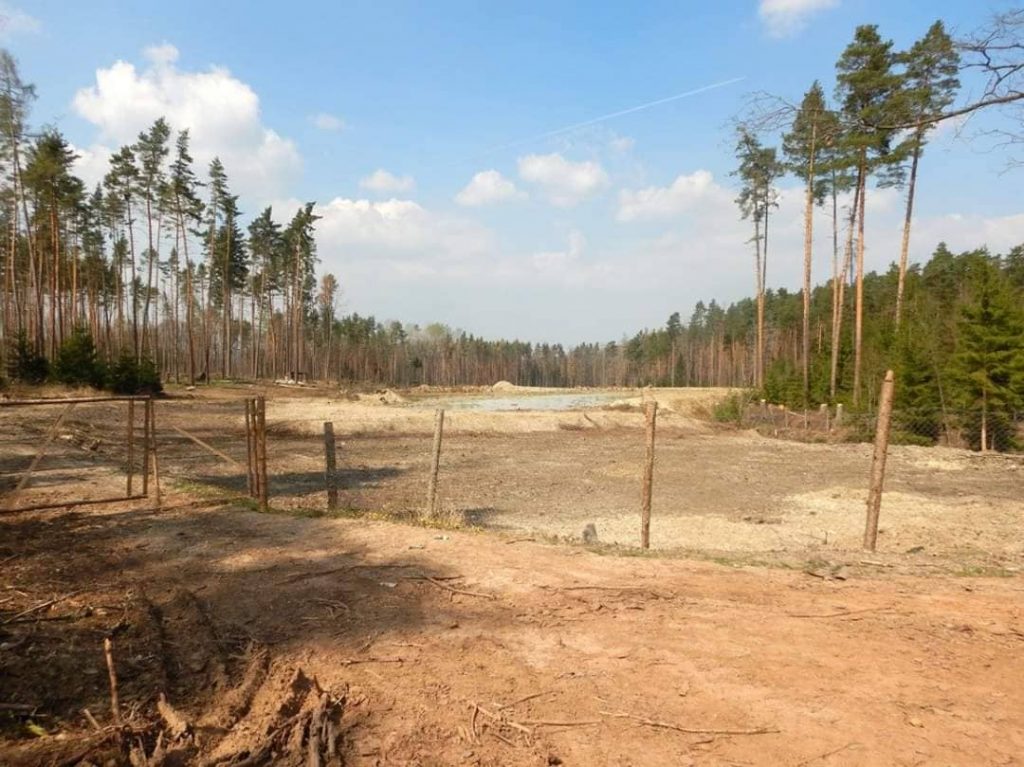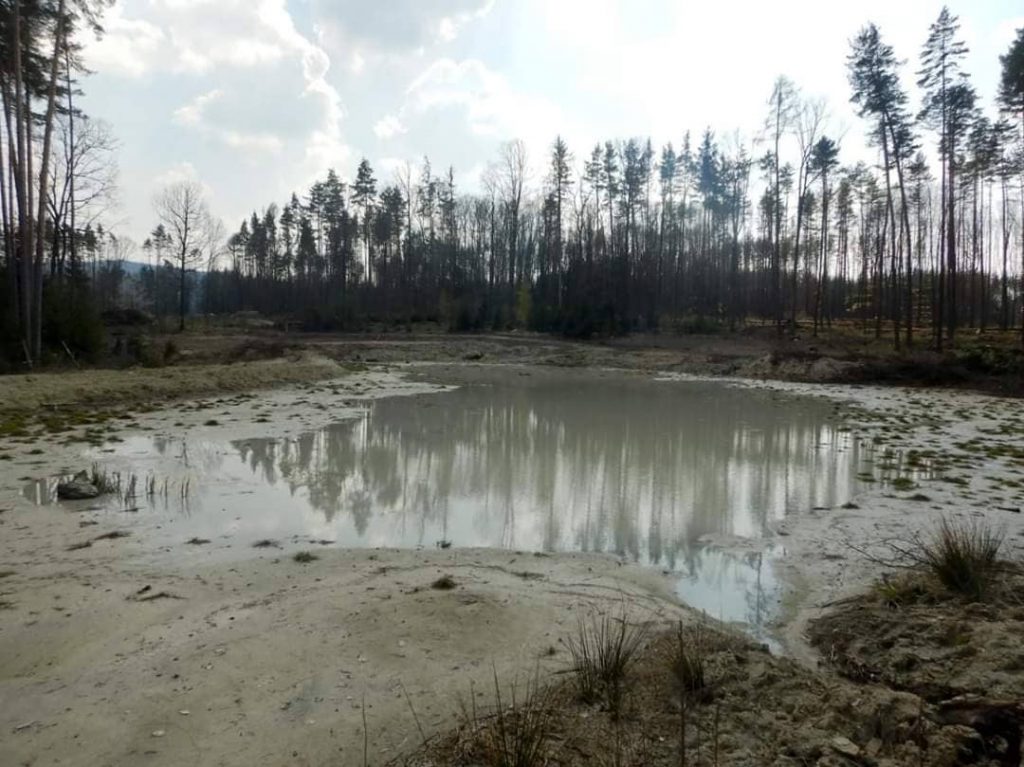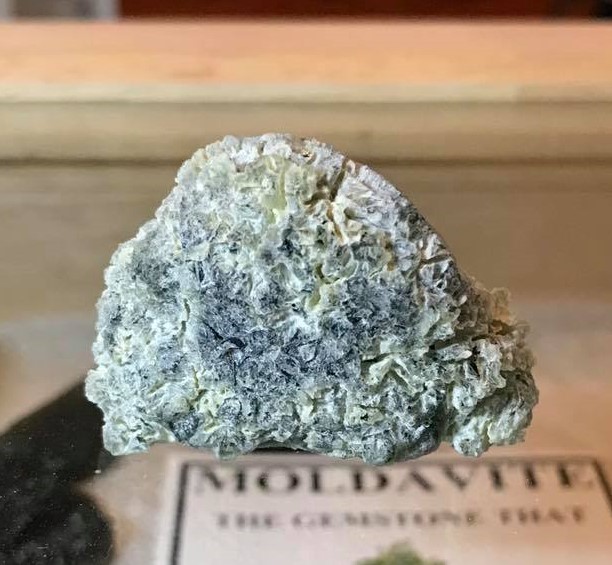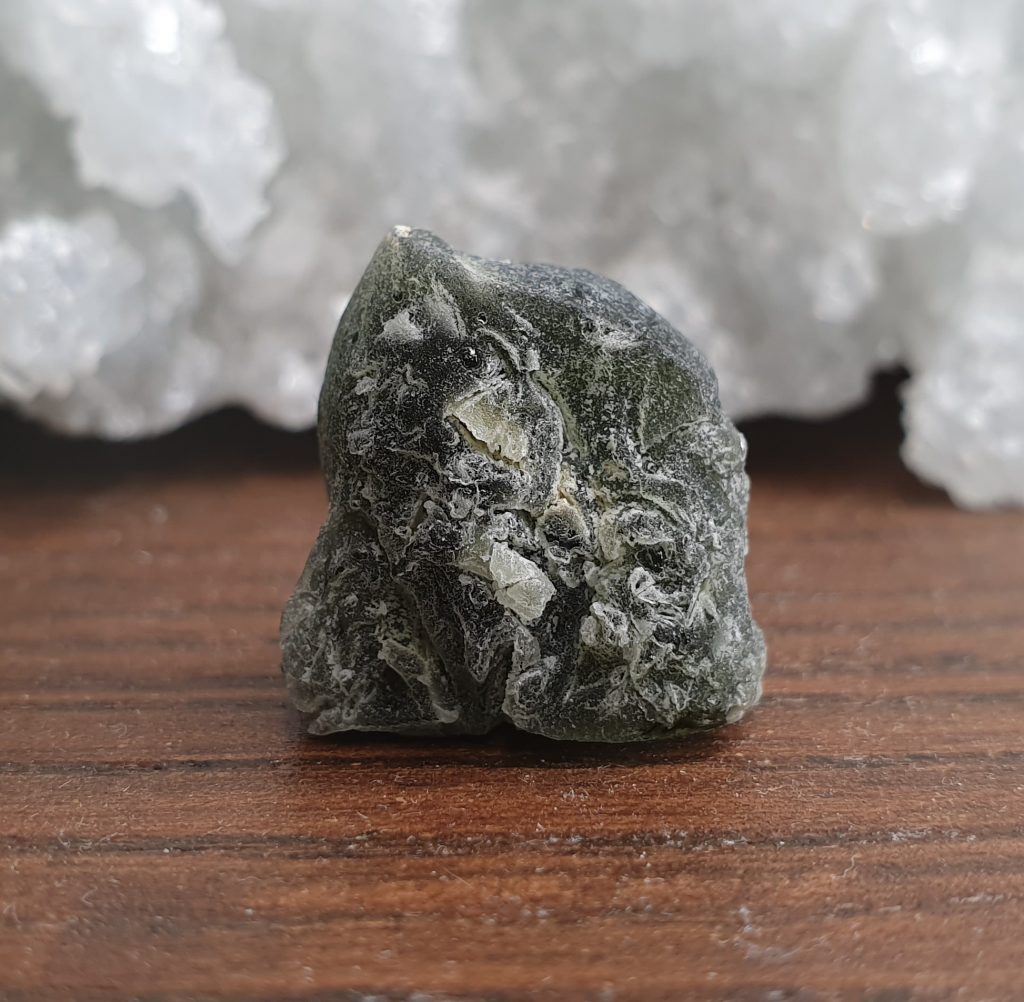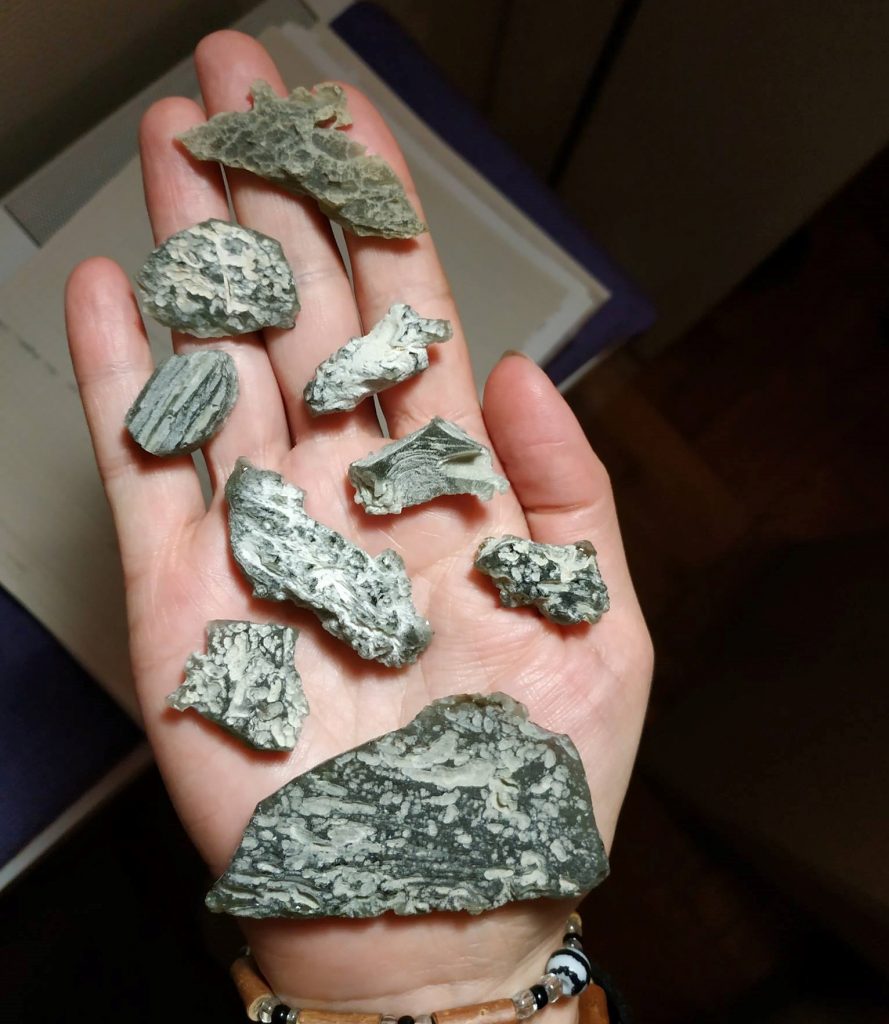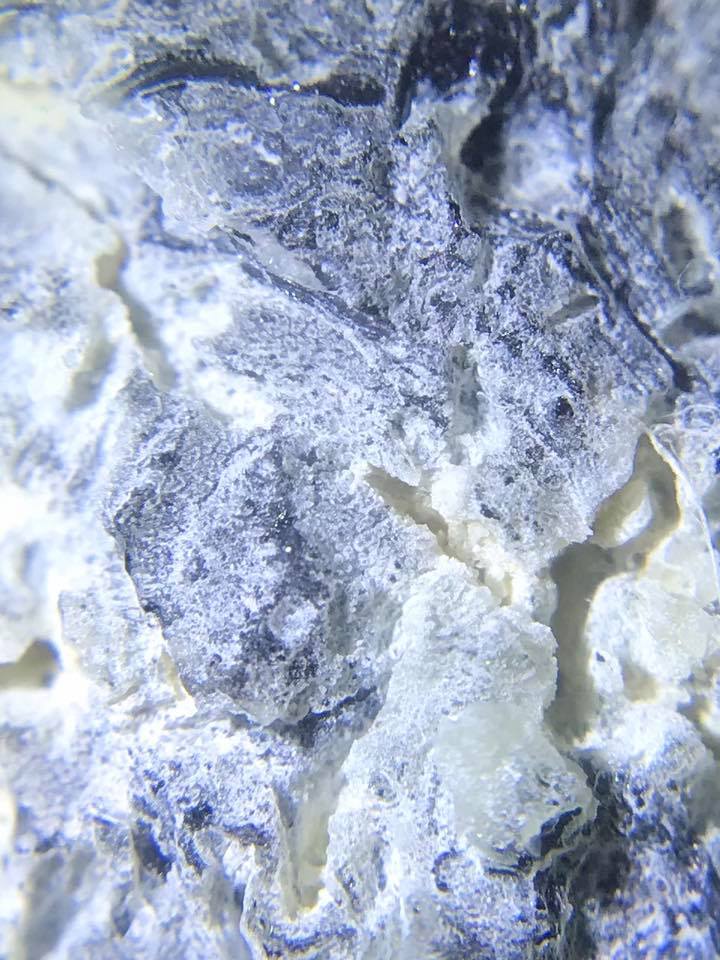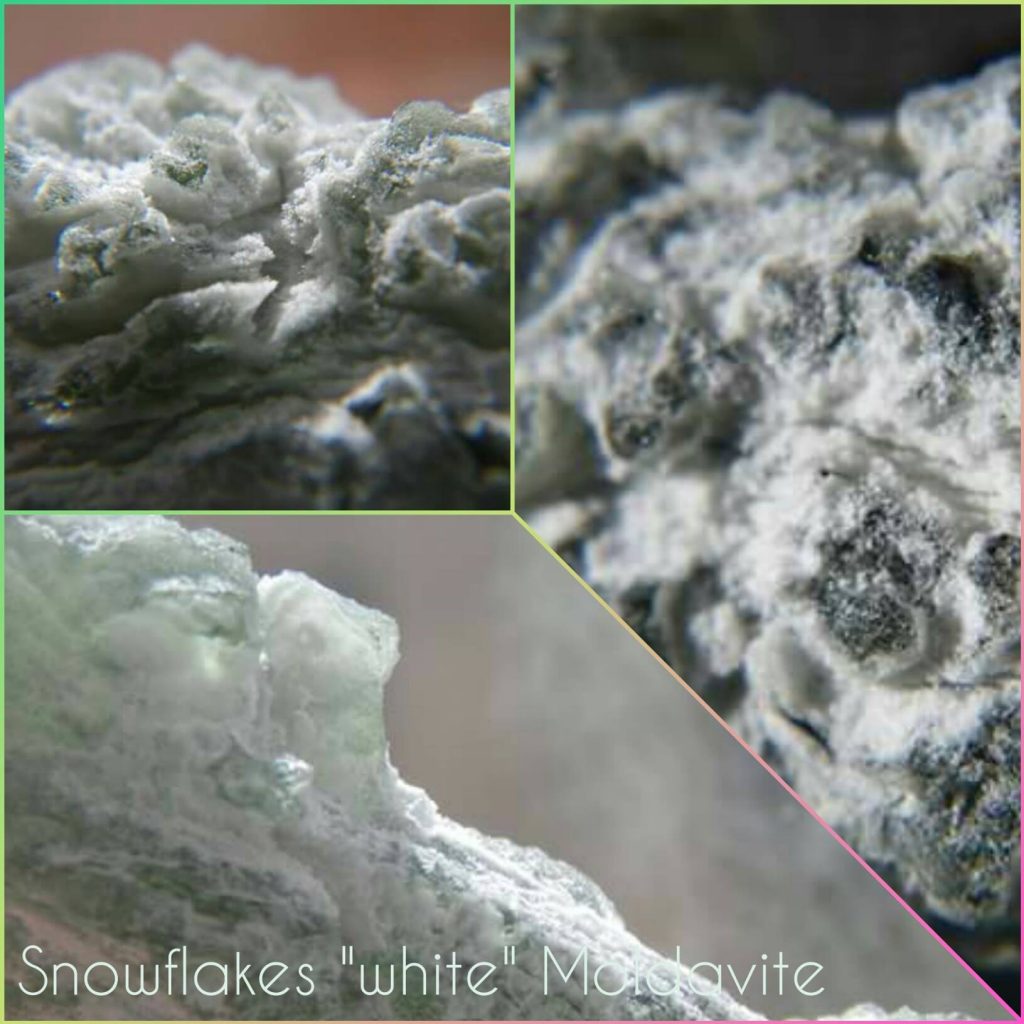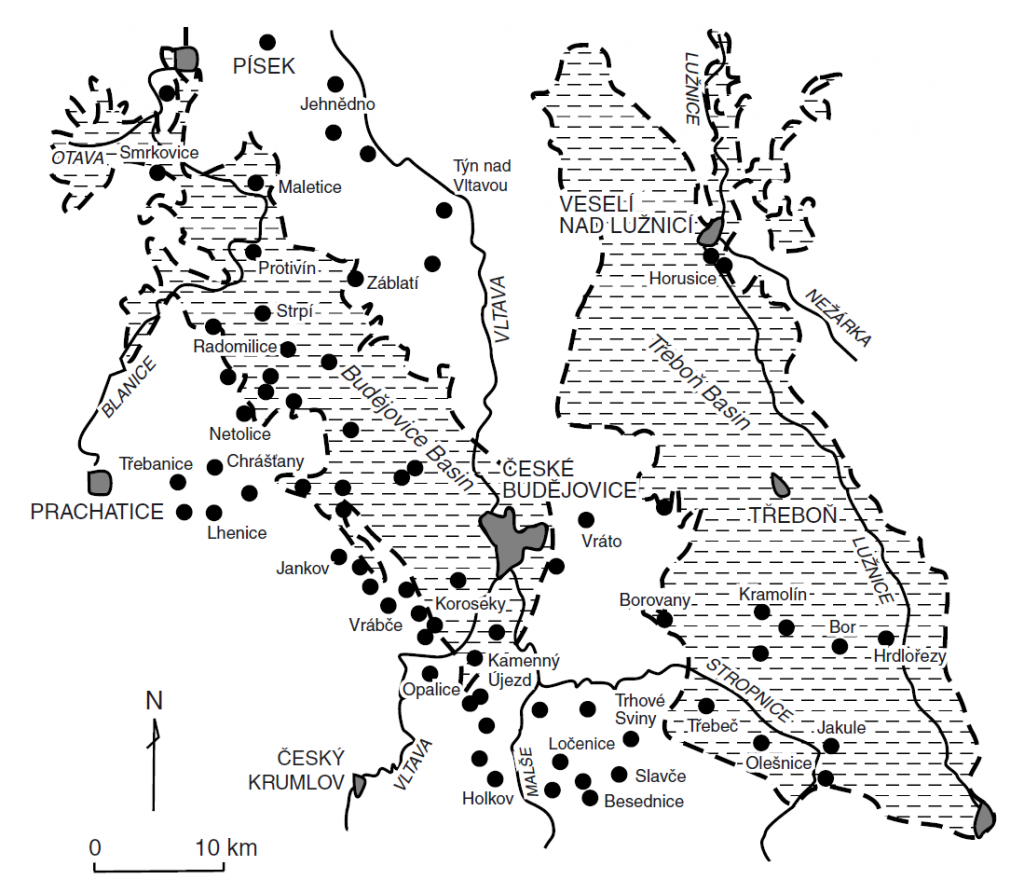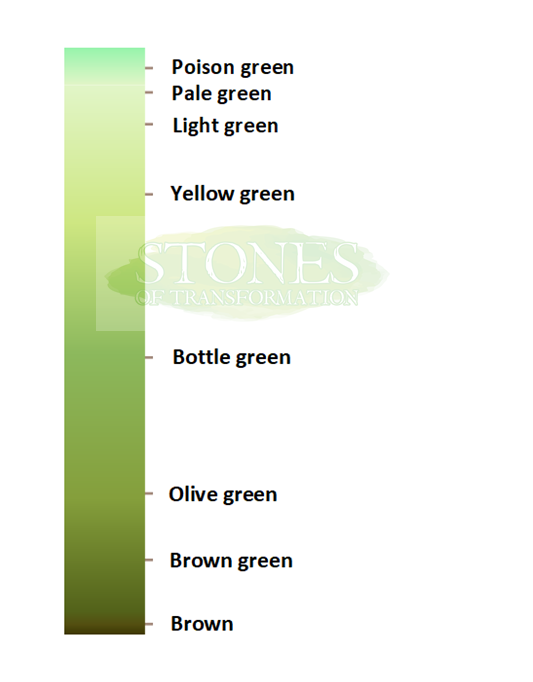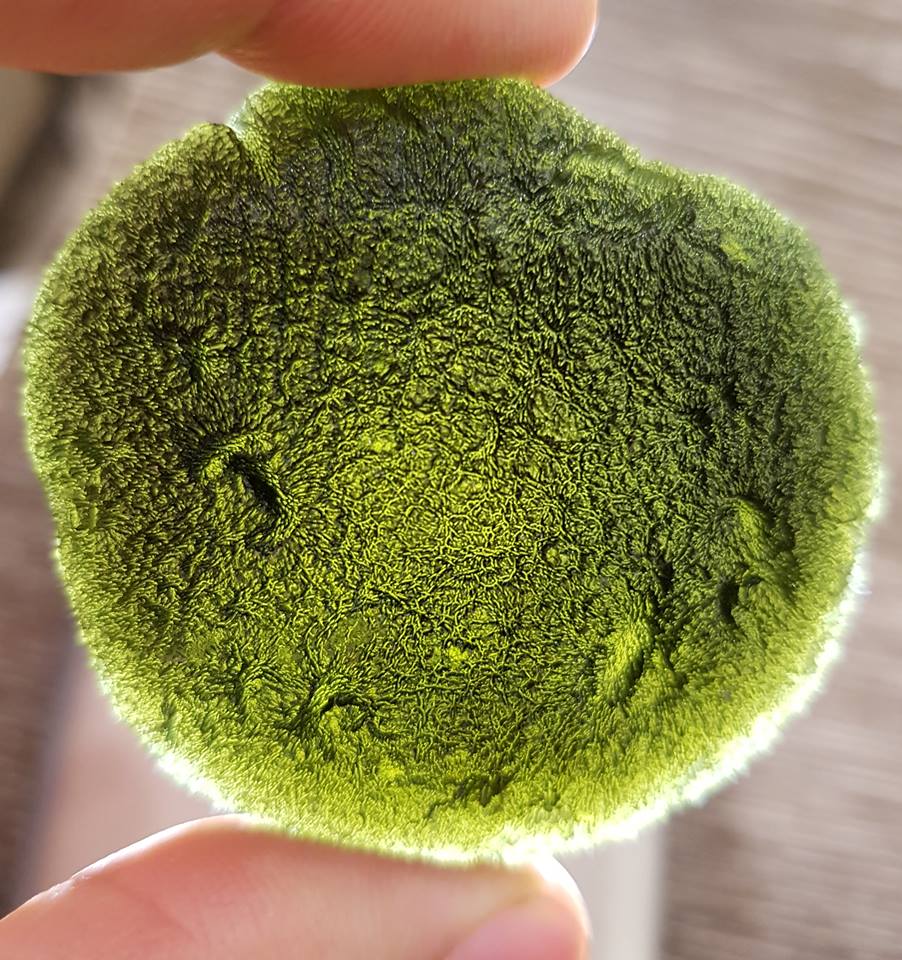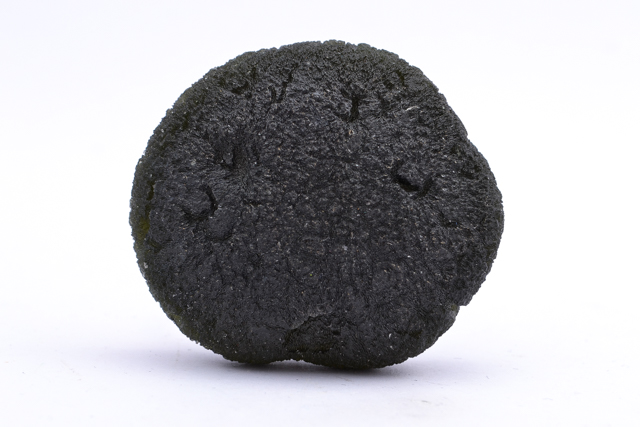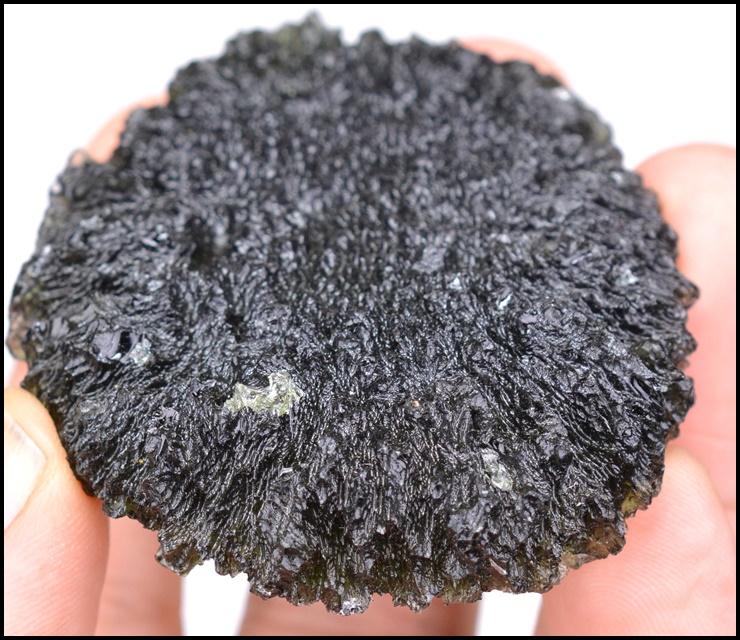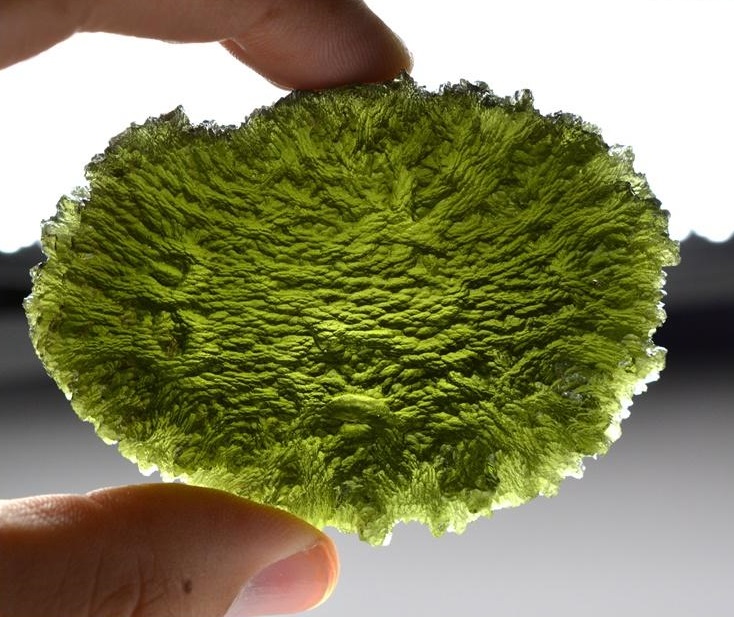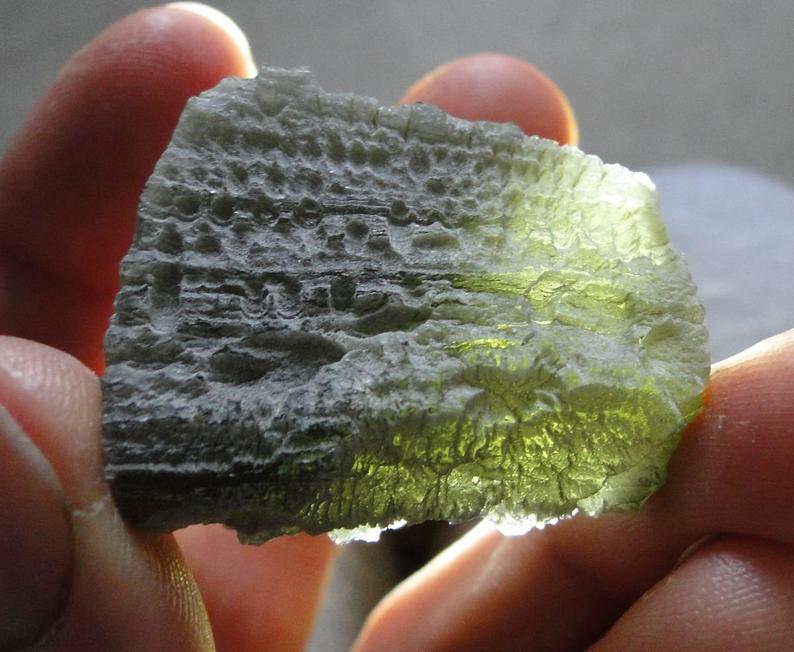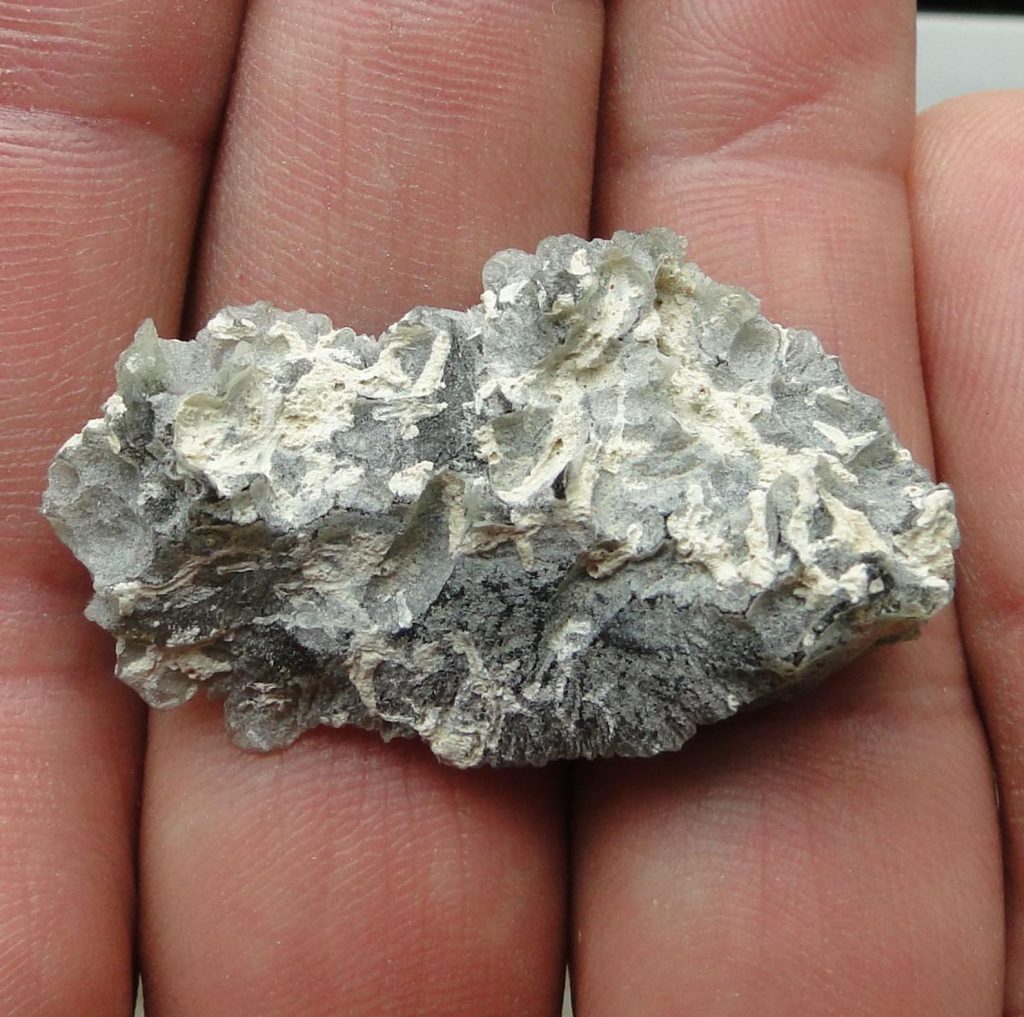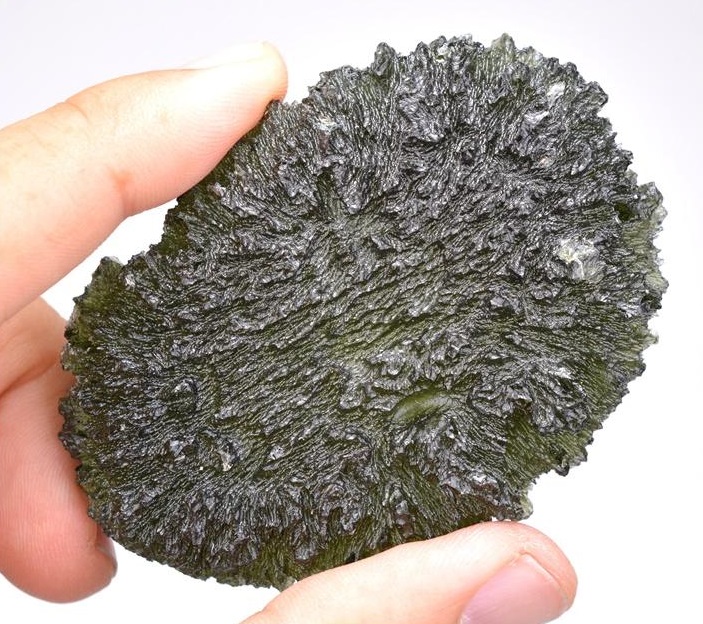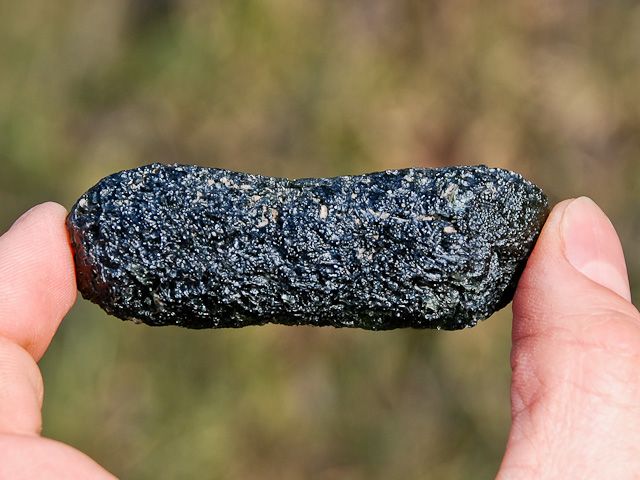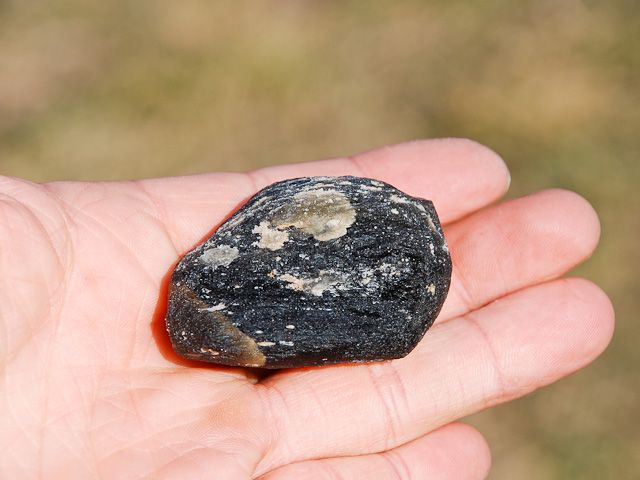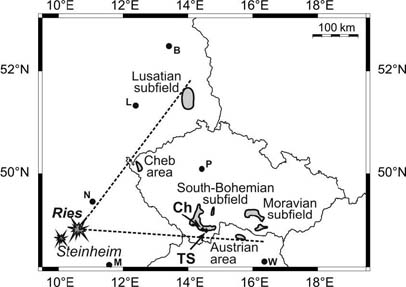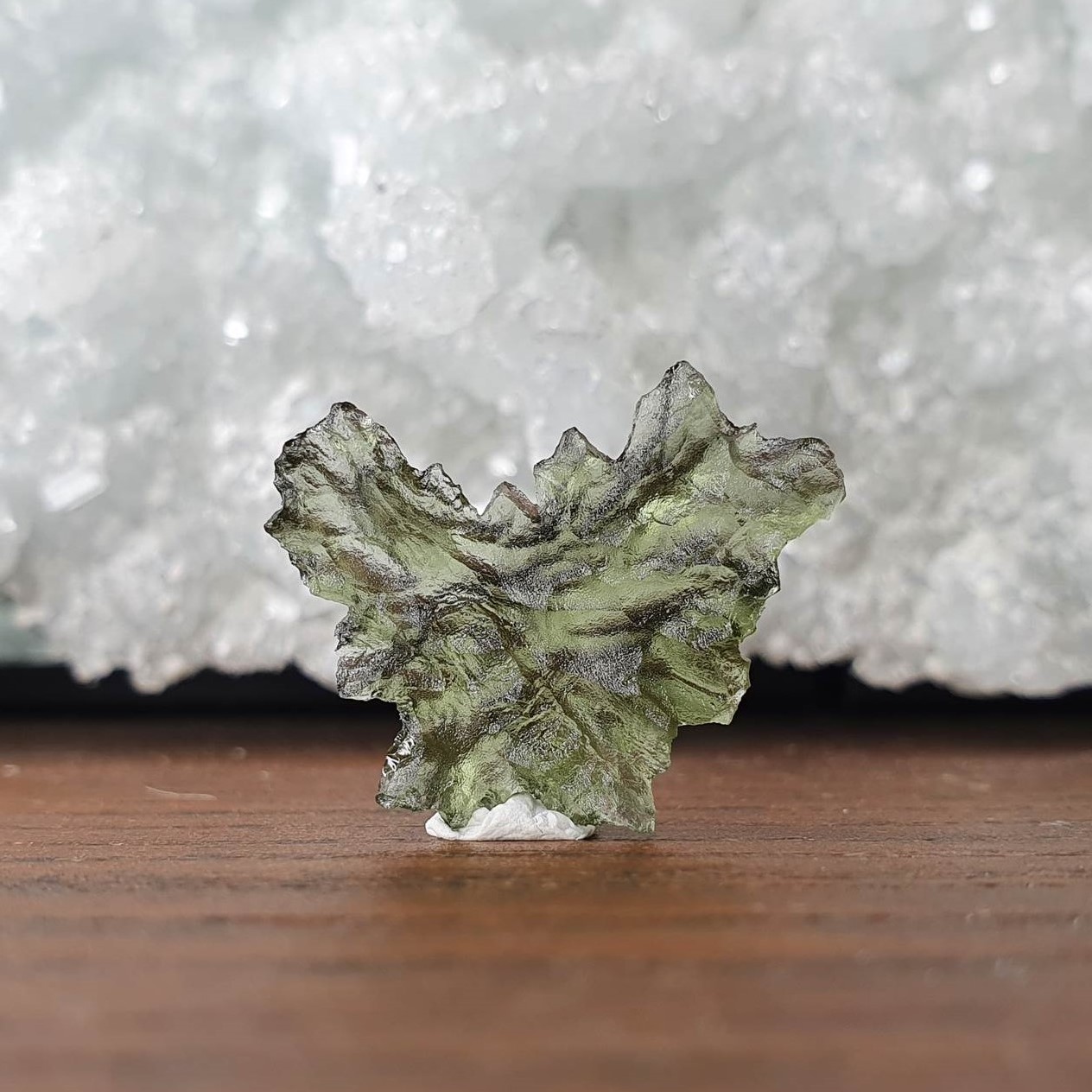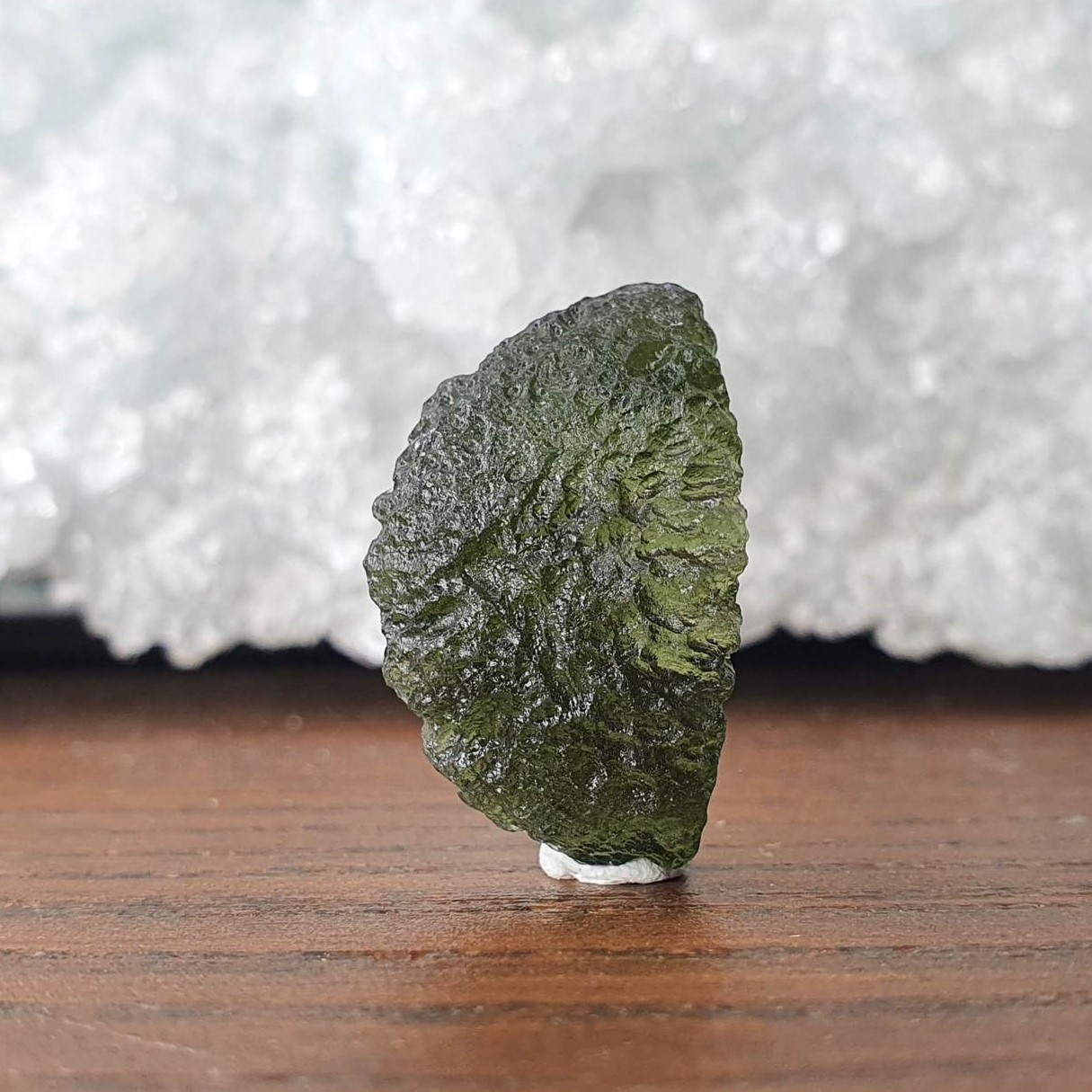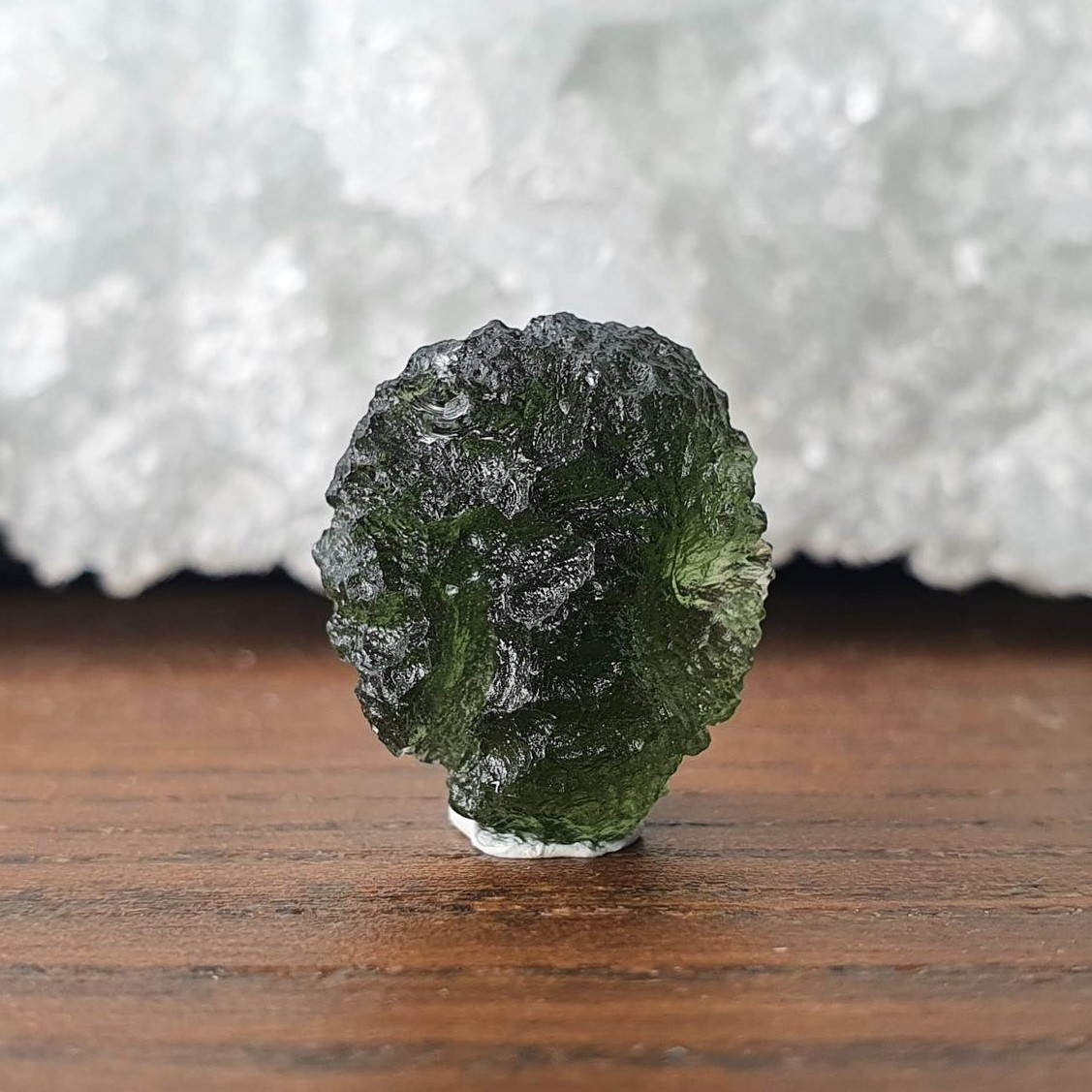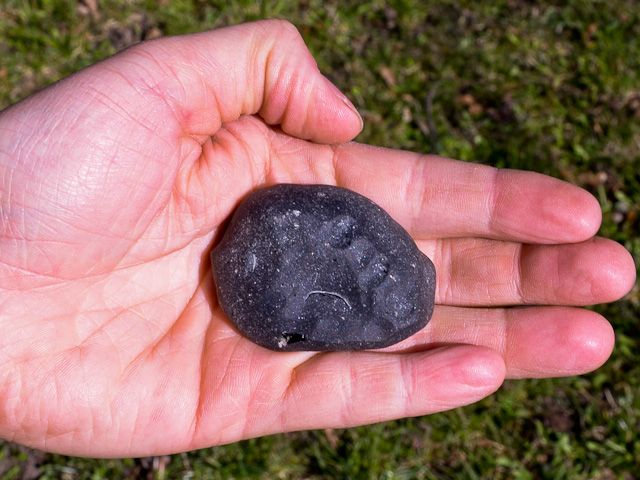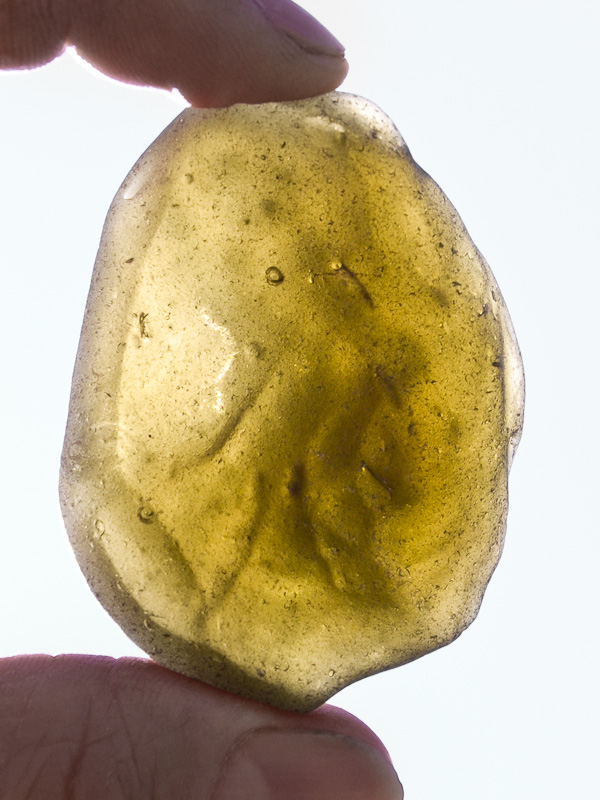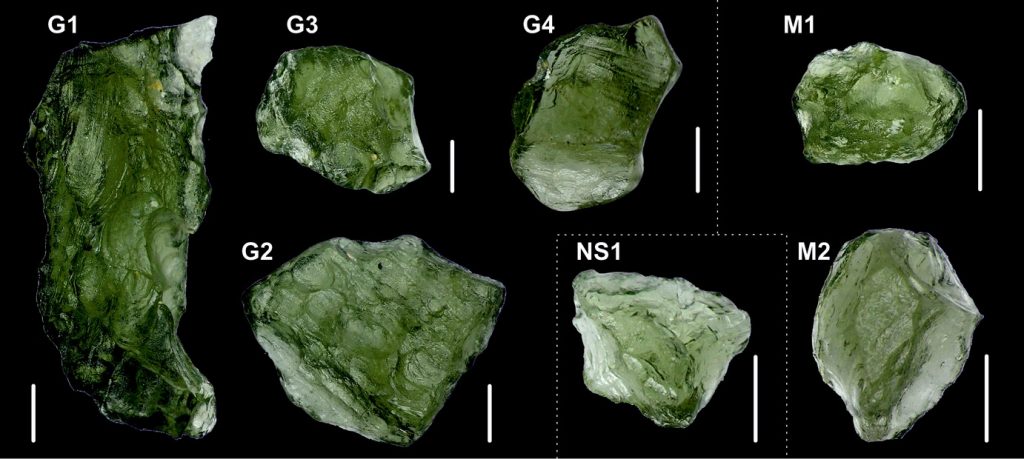What is the Darwinite tektite (Darwin Glass)?
Darwinite tektite (or Darwin Glass) is like the brother of Czech Republic’s Moldavite. It belongs to the same family as other tektites such as Moldavite, Tibetan tektite and Libyan Desert Glass. It is a natural impact glass only found in Tasmania, Australia and created by a meteorite strike around 800,000 years ago
The meteorite hit Tasmania with 20 megatons of energy (that’s 20 million tons of TNT) forming the 1.2 km diameter Darwin Crater in western Tasmania. The impact melted the surrounding Earth with the meteorite on impact and created Darwin Glass as a result. The darker varieties of Darwinite are said to contain more meteorite material than the lighter and more transparent pieces.
Darwinite comes in a range of colours including pale green, dark green, brown and black. Compared to Moldavite, it contains less silica and more magnesium and iron, making it darker in colour and less translucent than Moldavite.
The message of love from Darwinite-the stone of loving relationship
Darwinite connects with our Heart (4th), Third Eye (6th) and Crown (7th) chakras. Connecting with Darwinite’s energy can open our heart to more love and dissolve the protective amour around the heart. It can encourage us to openly engage with the world and all beings within it. The high ‘outer space’ energy of Darwinite stimulates our third eye and crown chakaras as well.
Carrying Darwinite will help us to feel more at home in the world. It sends a message that everything is love, and we should face each moment of our life with actions influenced by love.
The grounding tektite
Darwinite is known as being a grounding tektite meaning it can help to facilitate great transformation and keep us centered in the cycle of transformation. As we lose and shed the old parts of us, it reminds us that we are not losing anything. As there are always new things and opportunities that come up as a result of those changes.
As a tektite, Darwinite quickens growth, transformation, spiritual evolution and encourages an open engagement with the world and all beings. These beautiful tektites have the same high frequency energy and properties as Moldavite although are more gentle and connected with the Earth/Gaia energies. It can help us with facilitating a deeper connection with the natural environment, animals, plants and crystals. It reminds us to live in harmony with the environment and with our fellow companions.
Pairing with Moldavite
Darwinite and Moldavite synergizes with each others energy as they come from the same family of tektites or impact glass. Pairing Moldavite with Darwinite can assist with our grounding when working with the high energy of tektites without being overly grounding like some other crystals. Darwinite helps with opening our heart and embracing the cycle of change which is necessary during the journey of transformation.
Bring your Darwinite when you go for a walk through through nature and tune into the energy of the plants, animals, water and stones.
Gallery of Darwinite (Darwin Glass)
Interested in Darwinite (Darwin Glass)?
See our range of Darwin Glass here www.stonesoftransformation.com.au/product-category/crystal/darwinite-tektite/
Want more useful information?
See the guides:
Guide to Genuine and Fake Moldavite: www.stonesoftransformation.com.au/blog/fake-moldavite-guide/
The Best Guide on Spotting and Avoiding Fake Moldavite: www.stonesoftransformation.com.au/the-best-guide-on-spotting-and-avoiding-fake-moldavite/
Shapes of Moldavite: www.stonesoftransformation.com.au/blog/guide-to-the-shapes-of-moldavite/
Busting myths of Moldavite: www.stonesoftransformation.com.au/busting-some-myths-of-moldavite/
Other useful guides and blog posts: www.stonesoftransformation.com.au/blog/list-of-useful-posts/
Follow our Facebook page for updates on great information: www.facebook.com/StonesofTransformationMoldaviteStore
Customer reviews: www.stonesoftransformation.com.au/reviews/
Shop and sale page: www.stonesoftransformation.com.au/shop/

